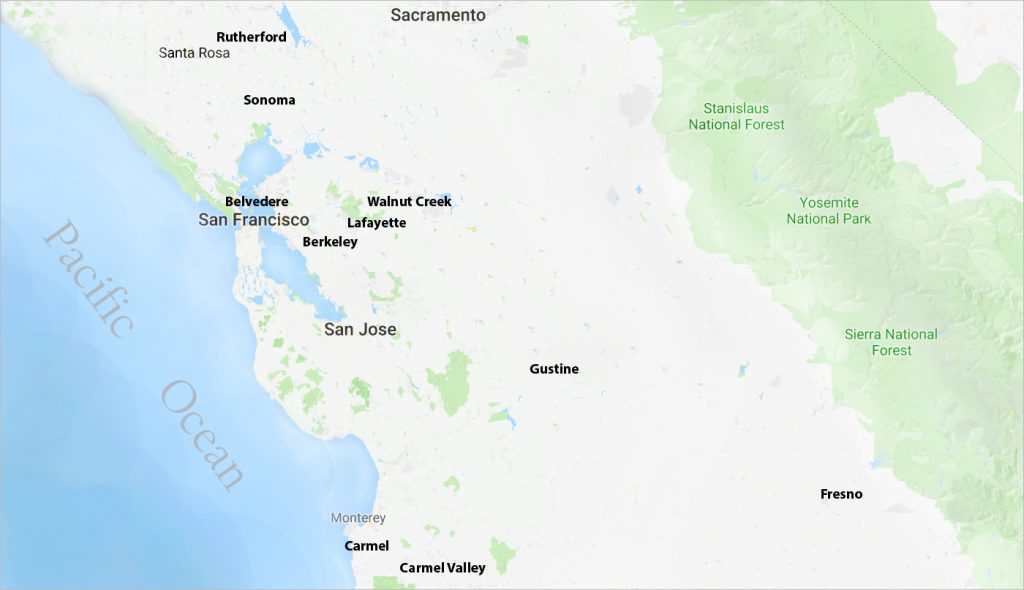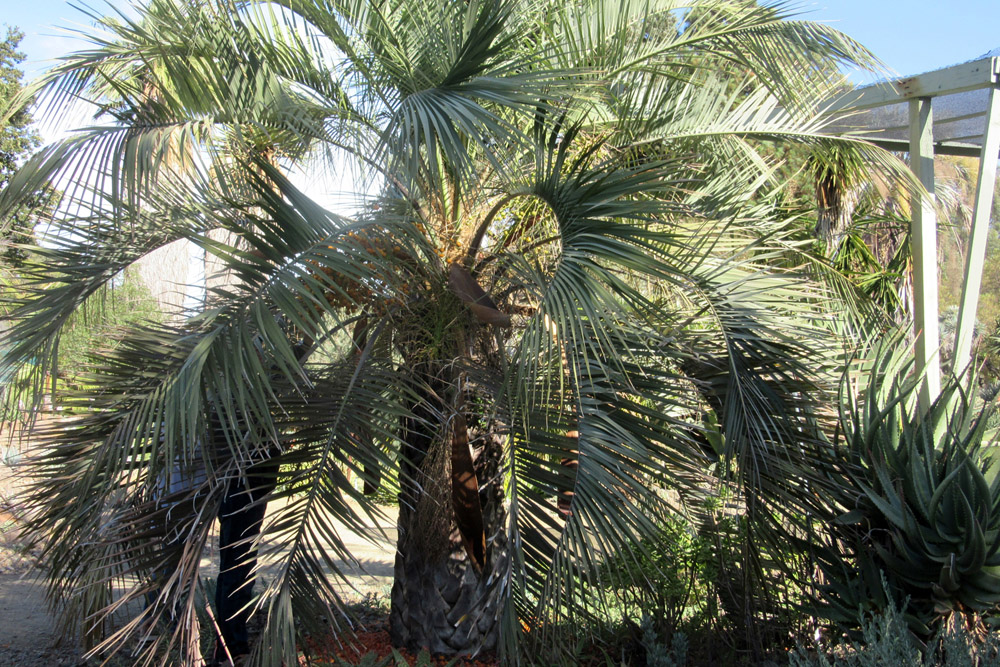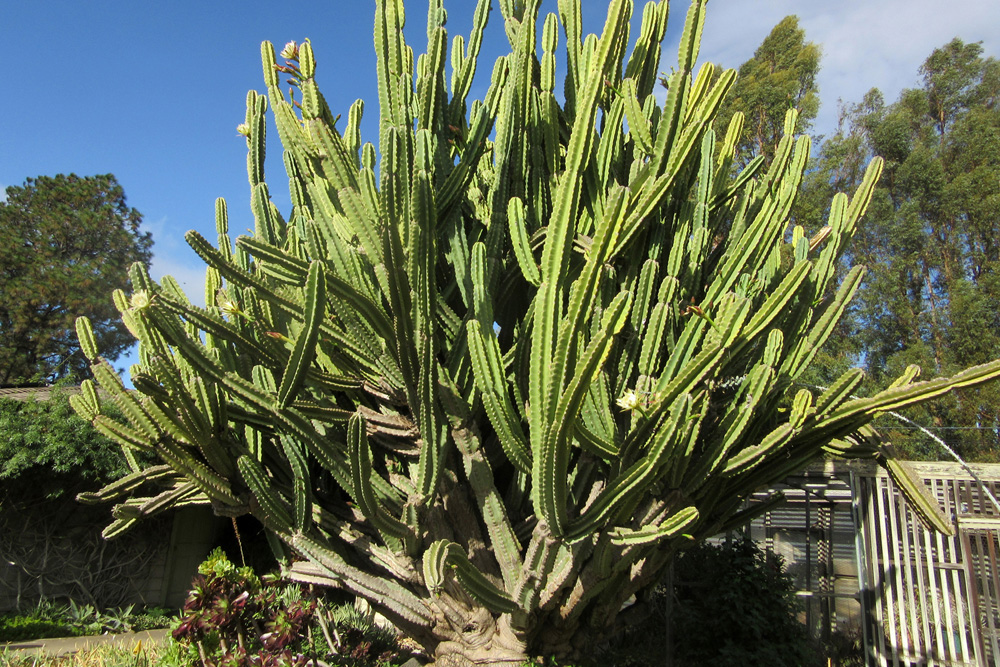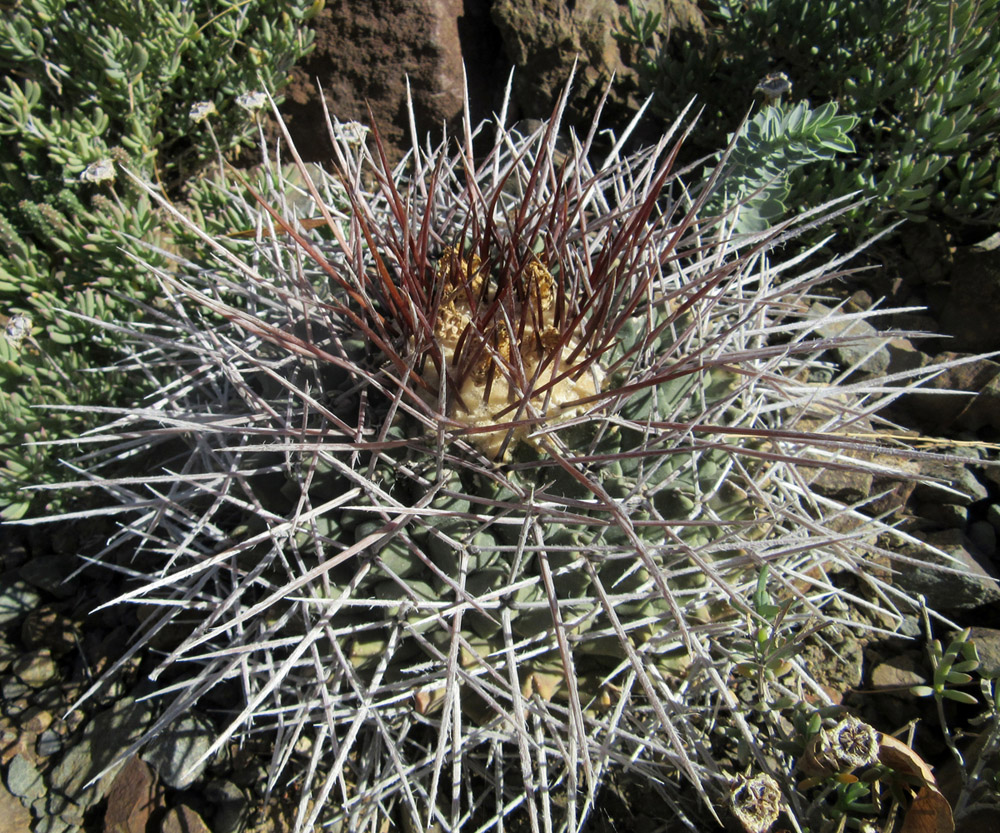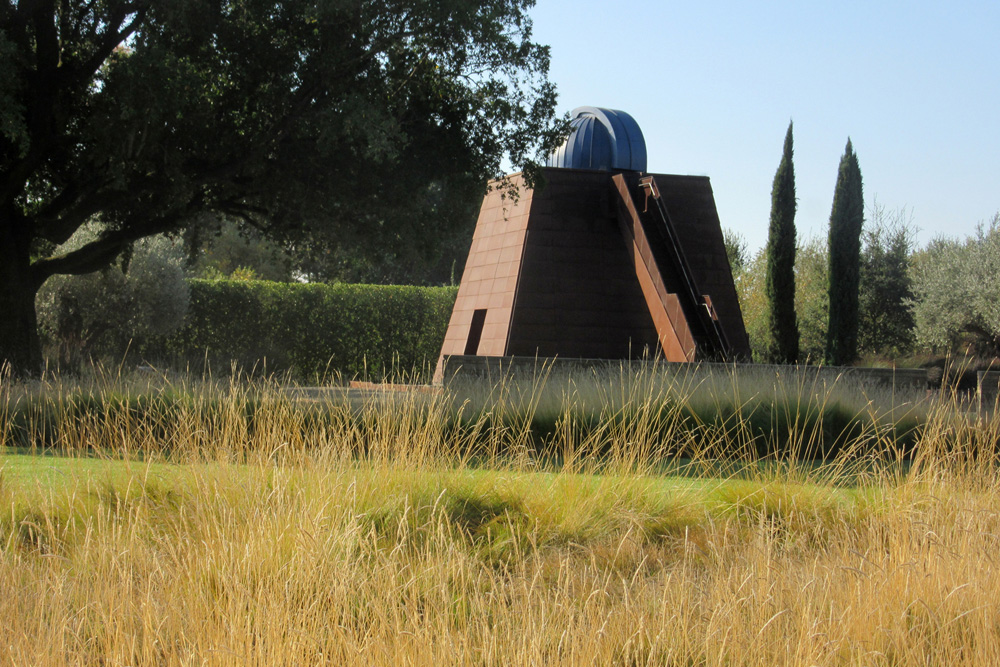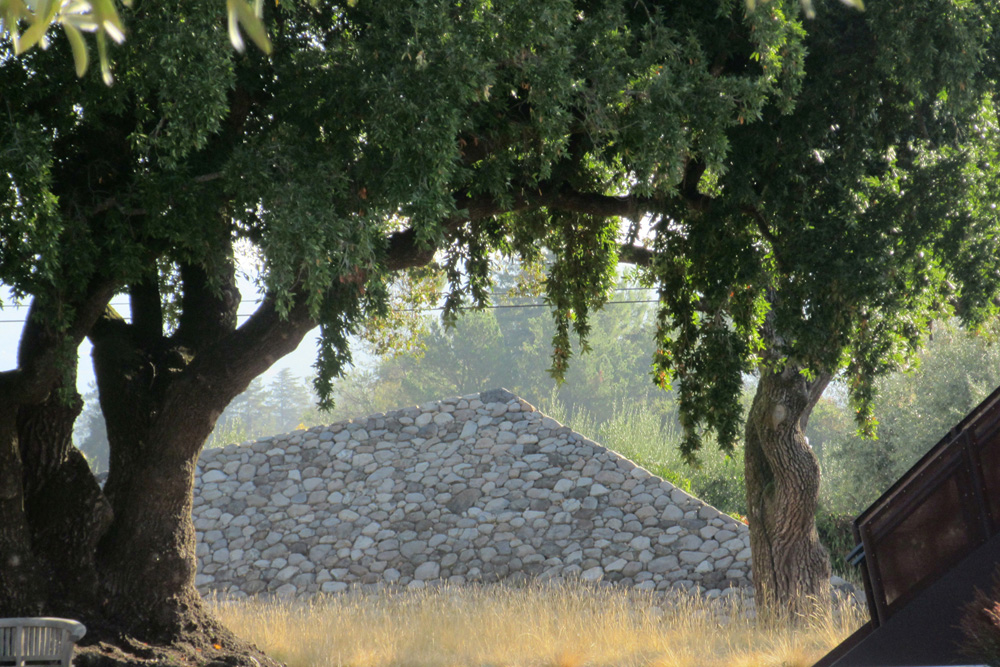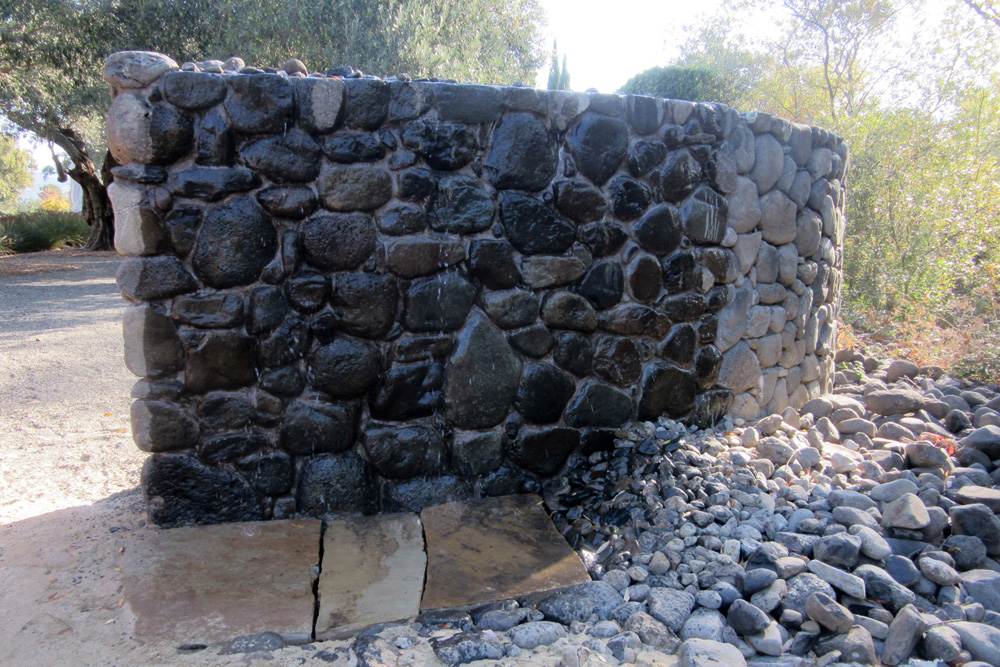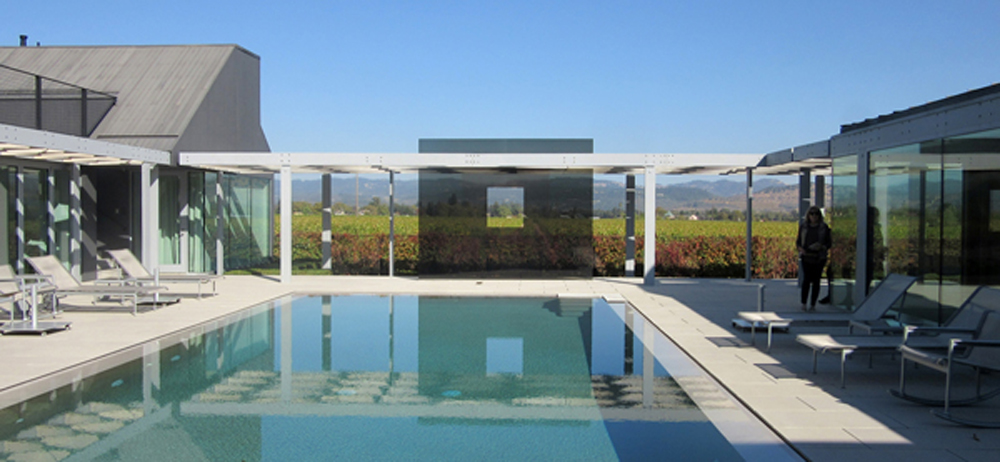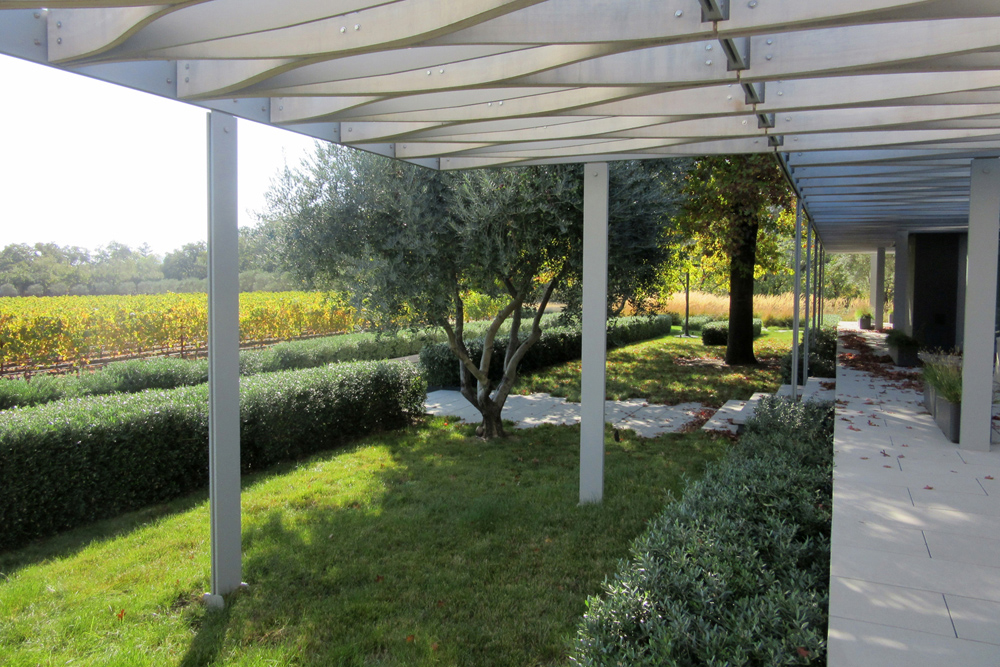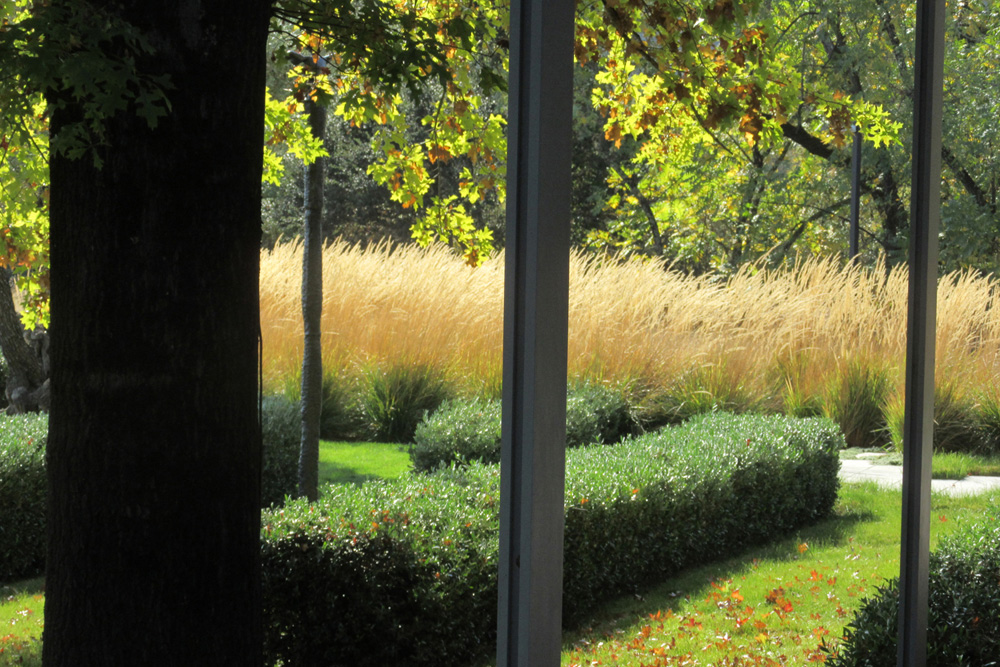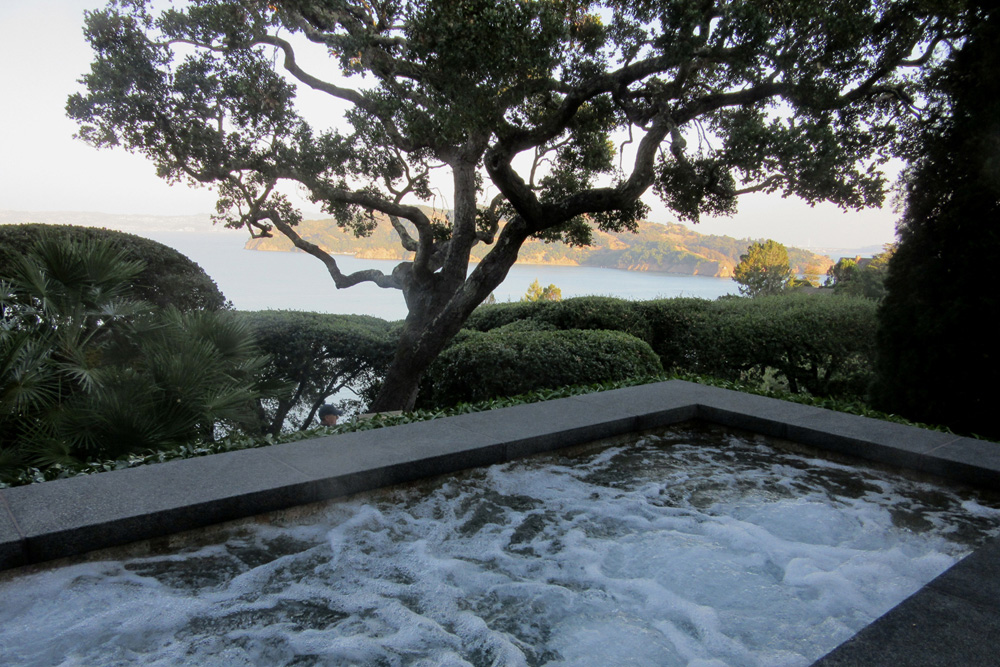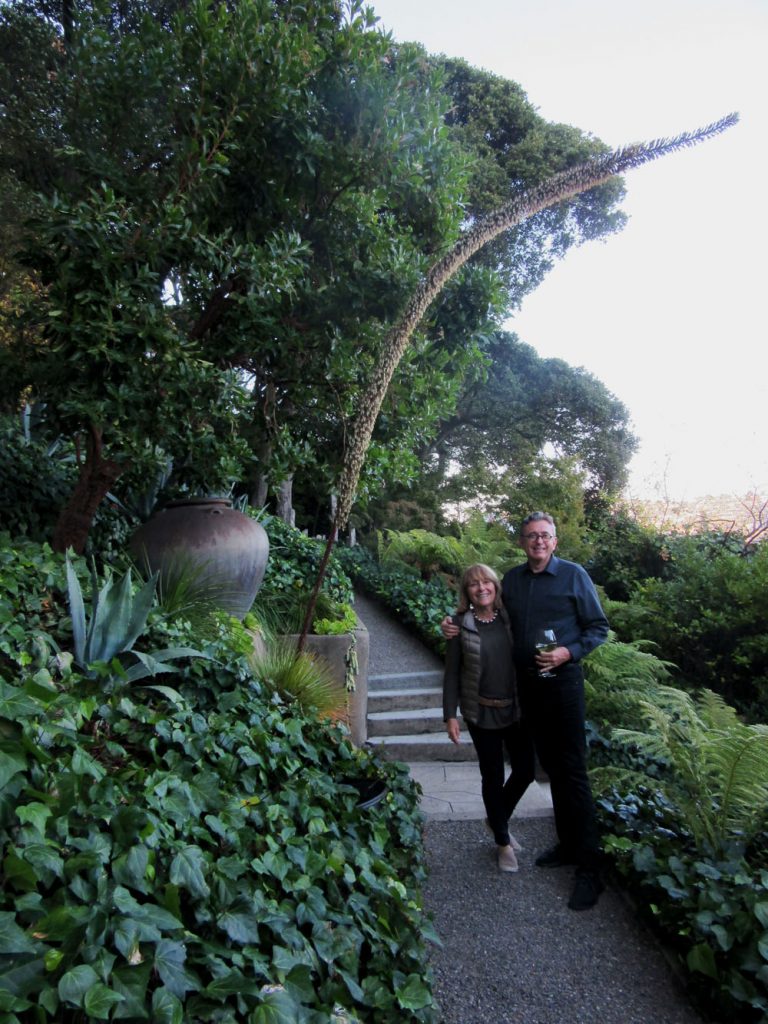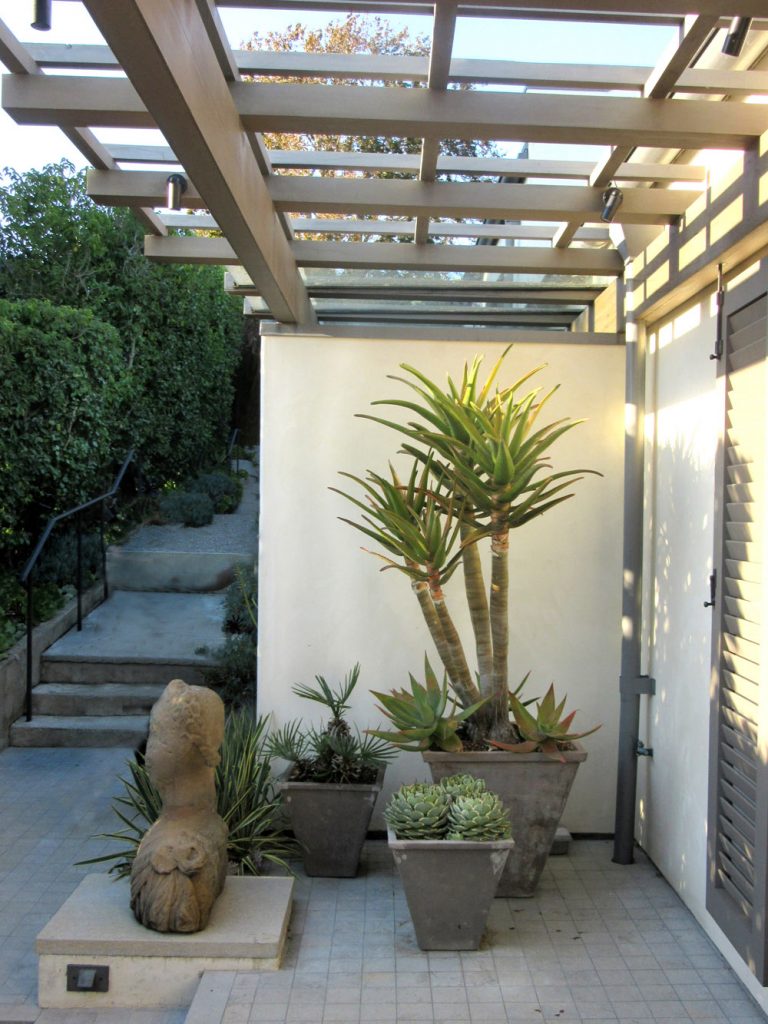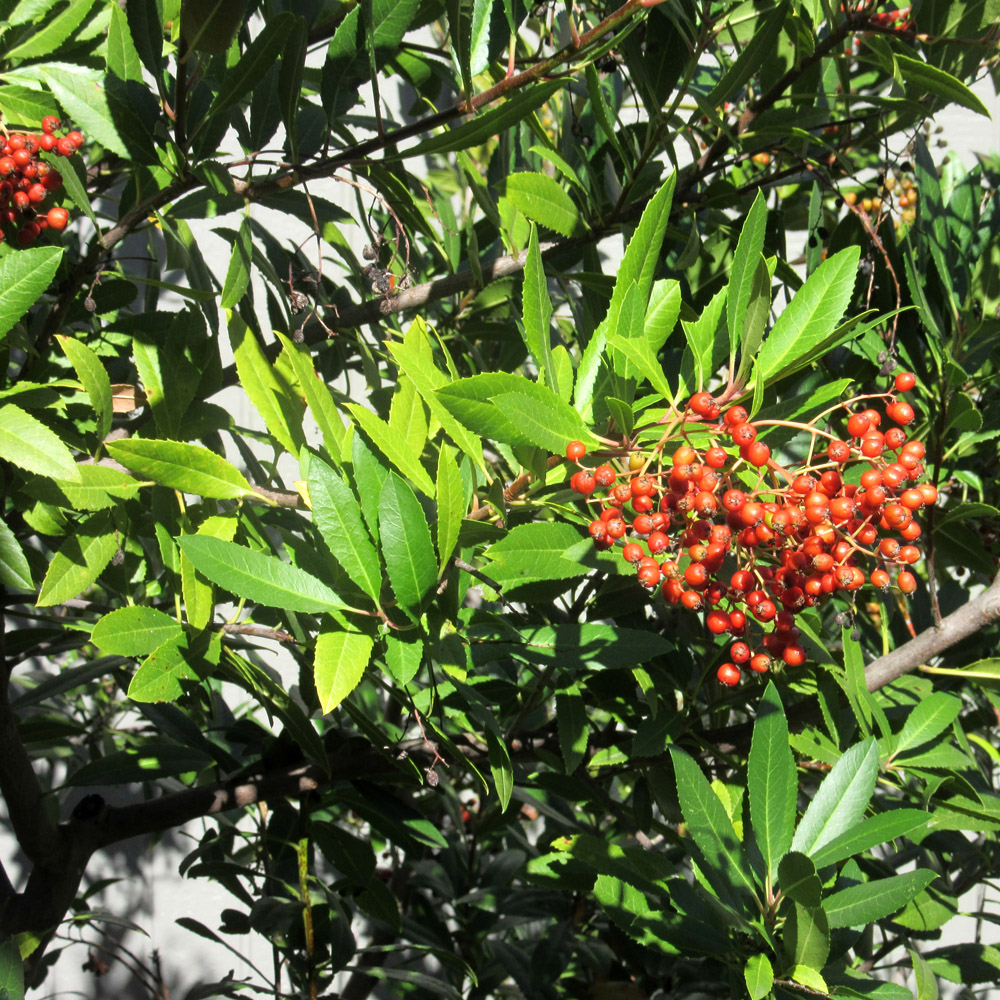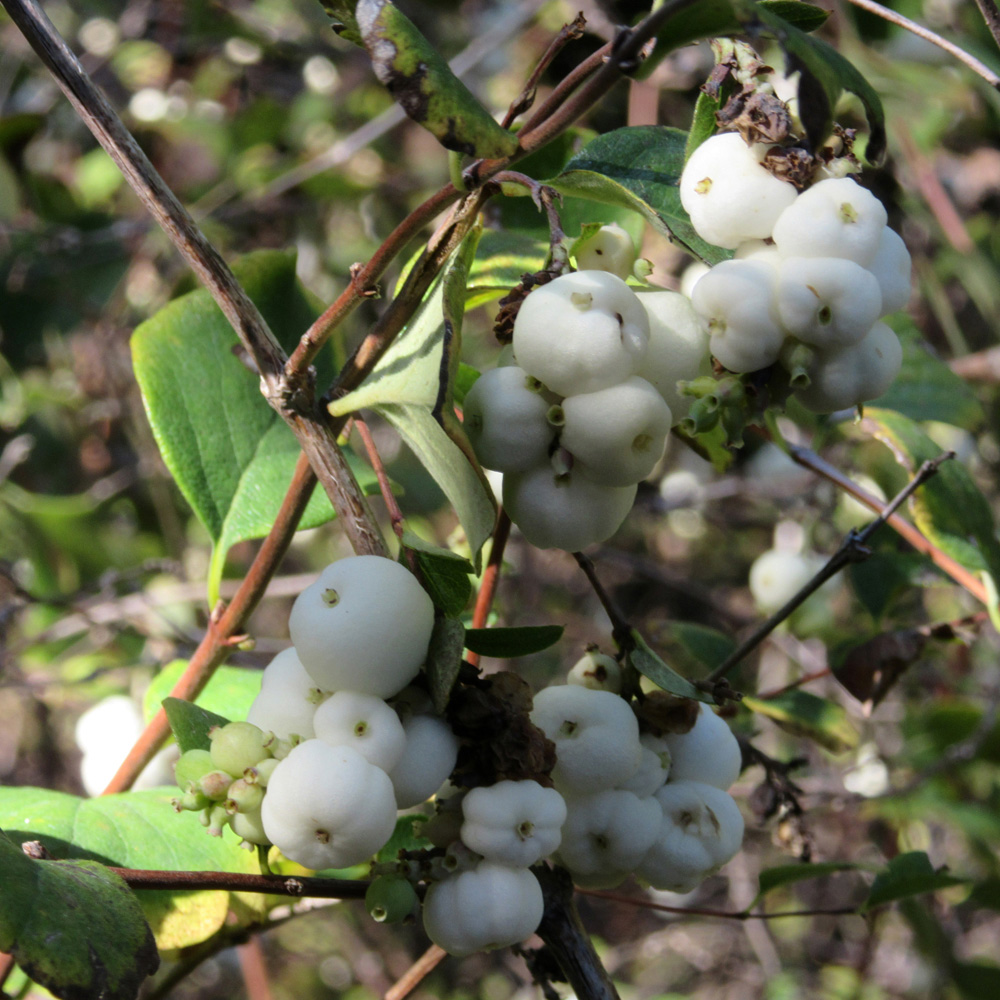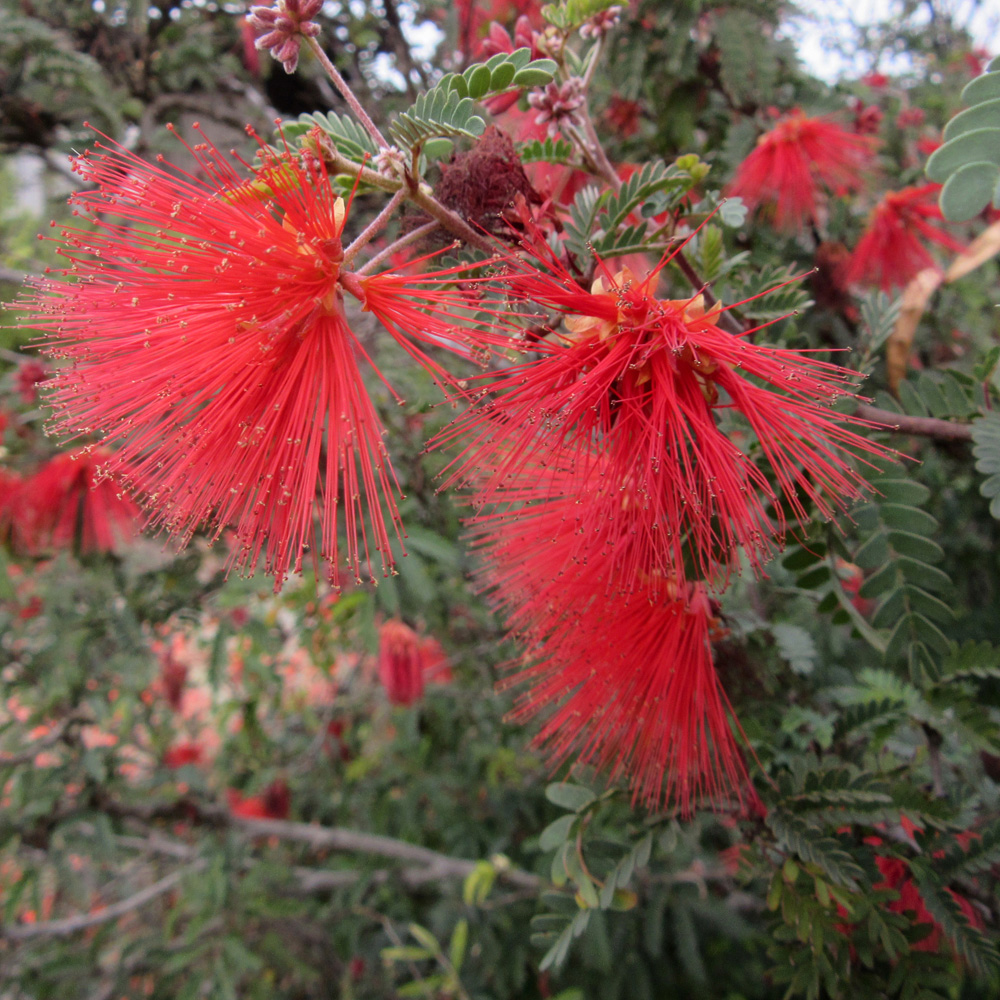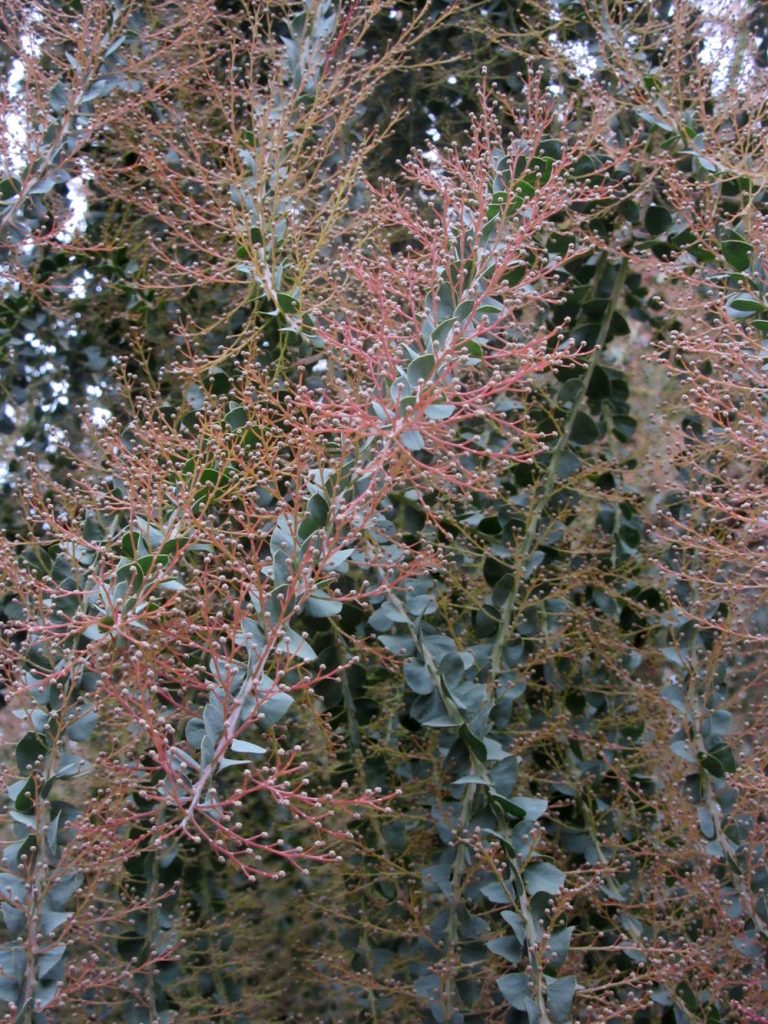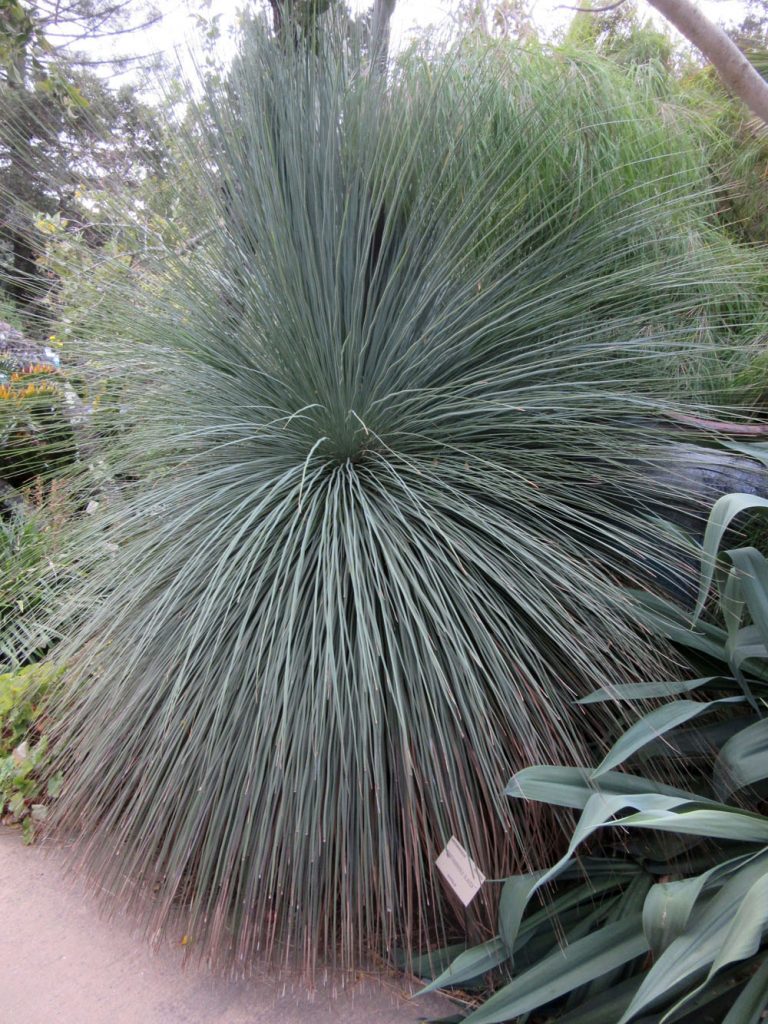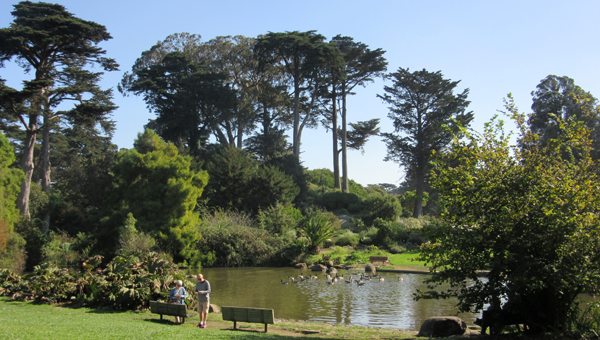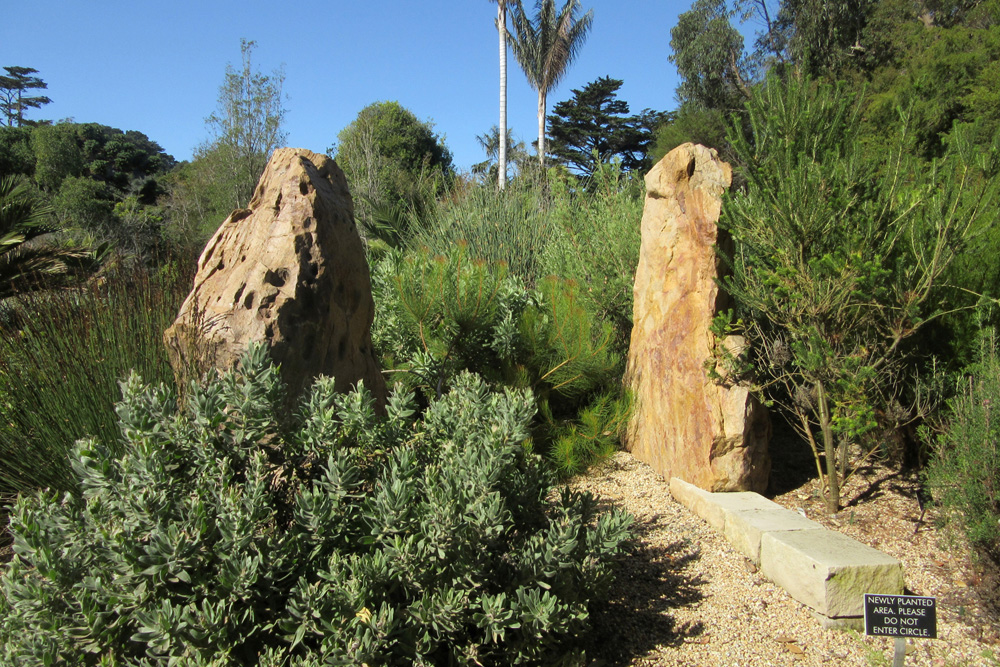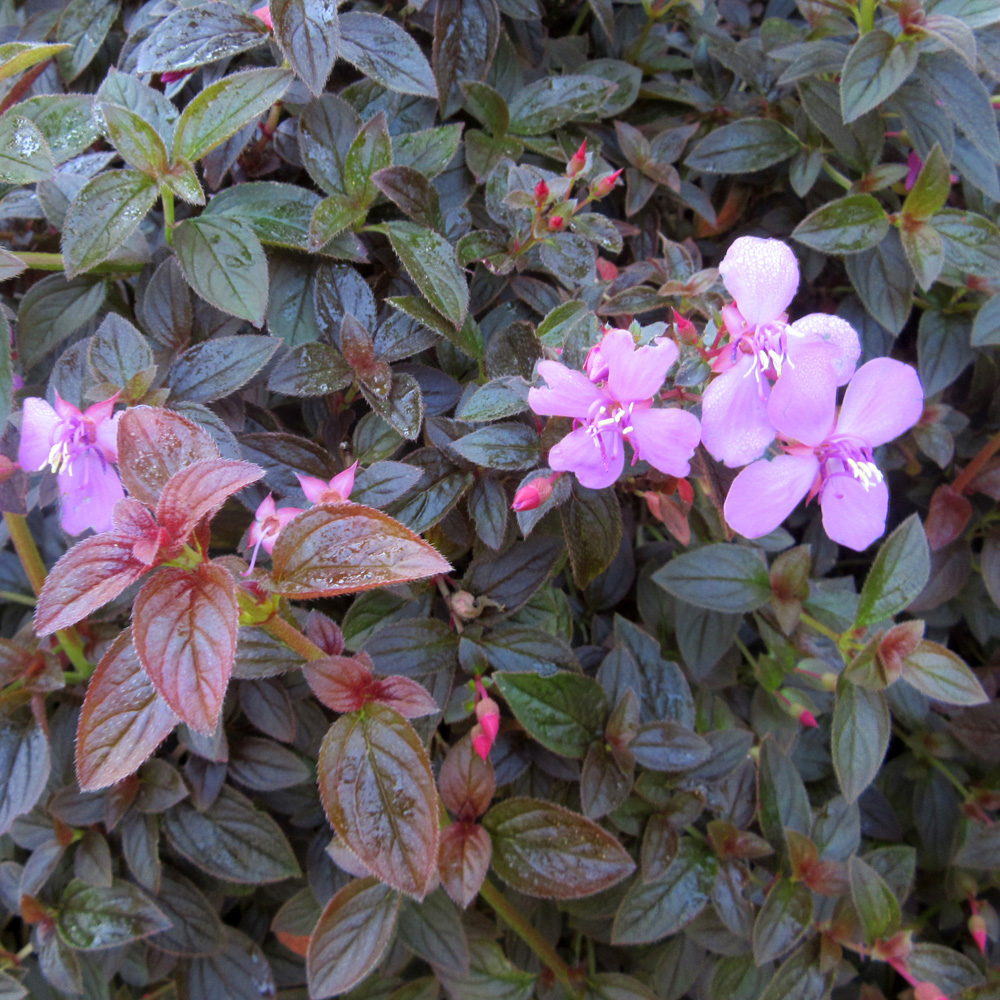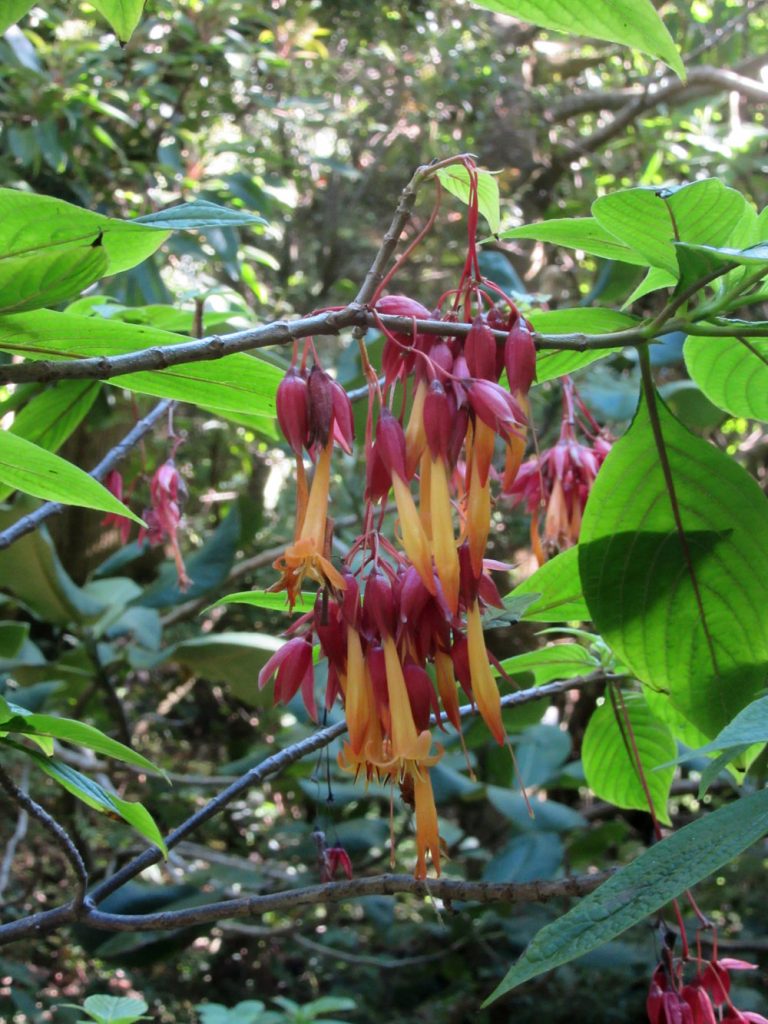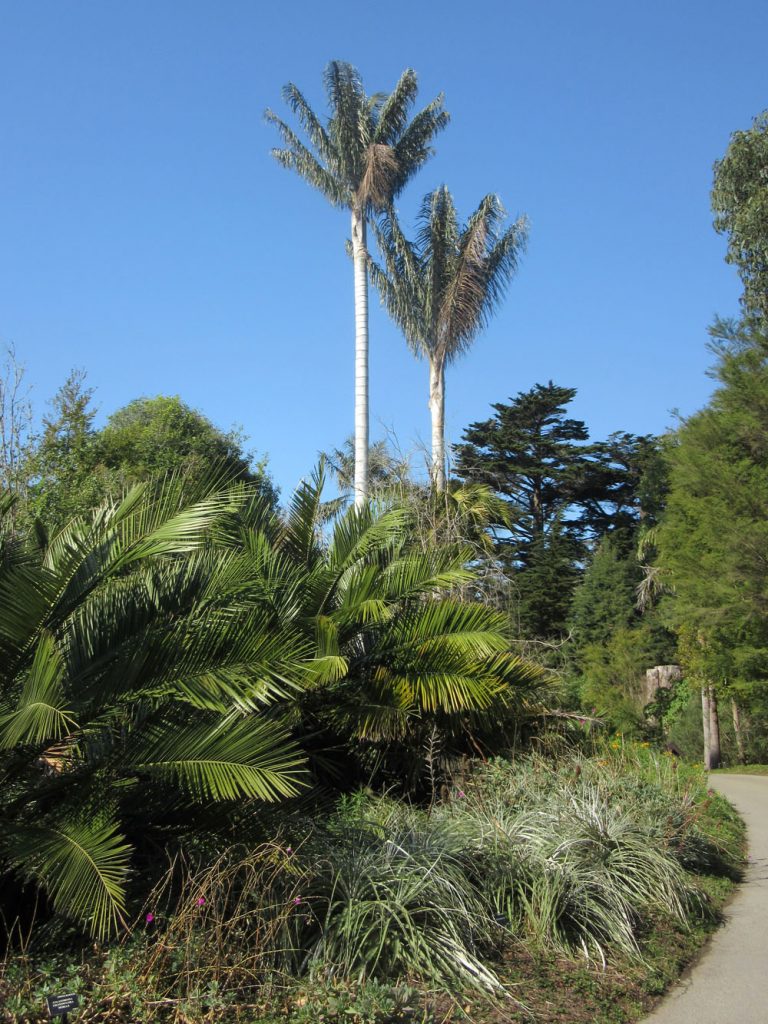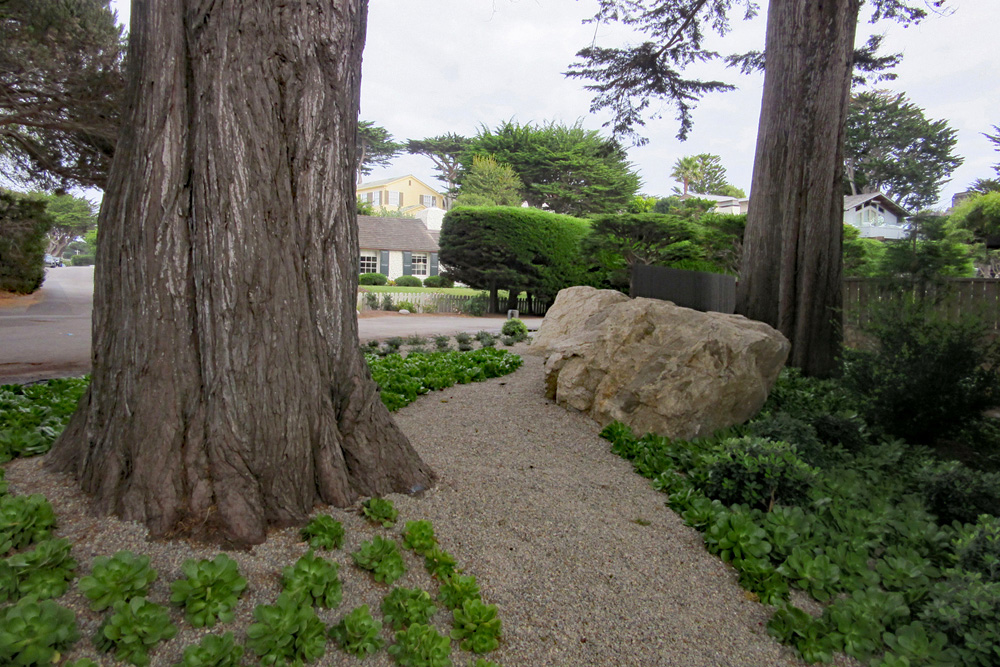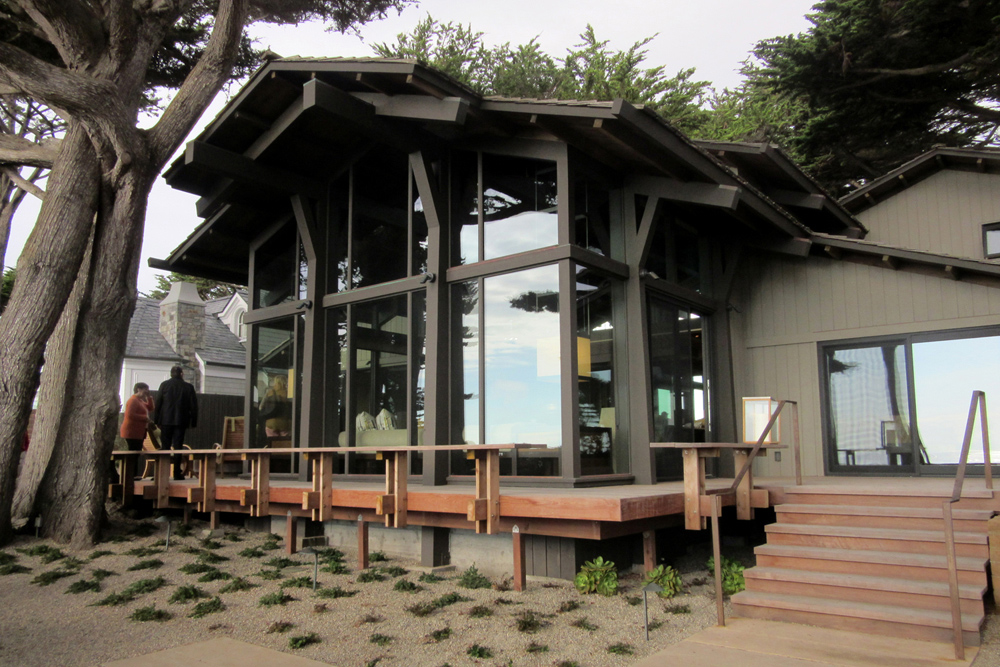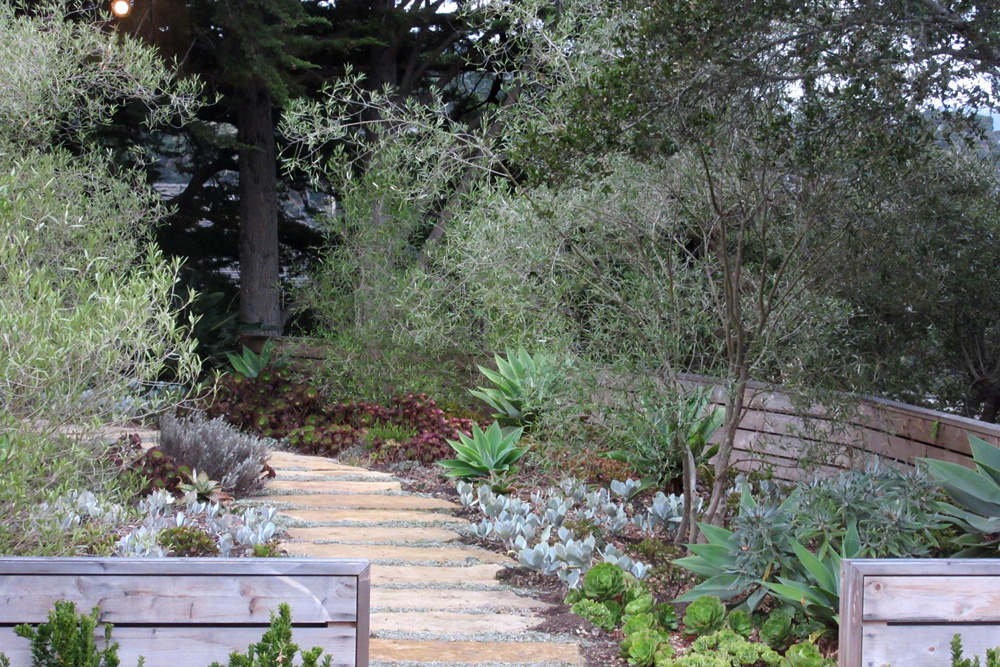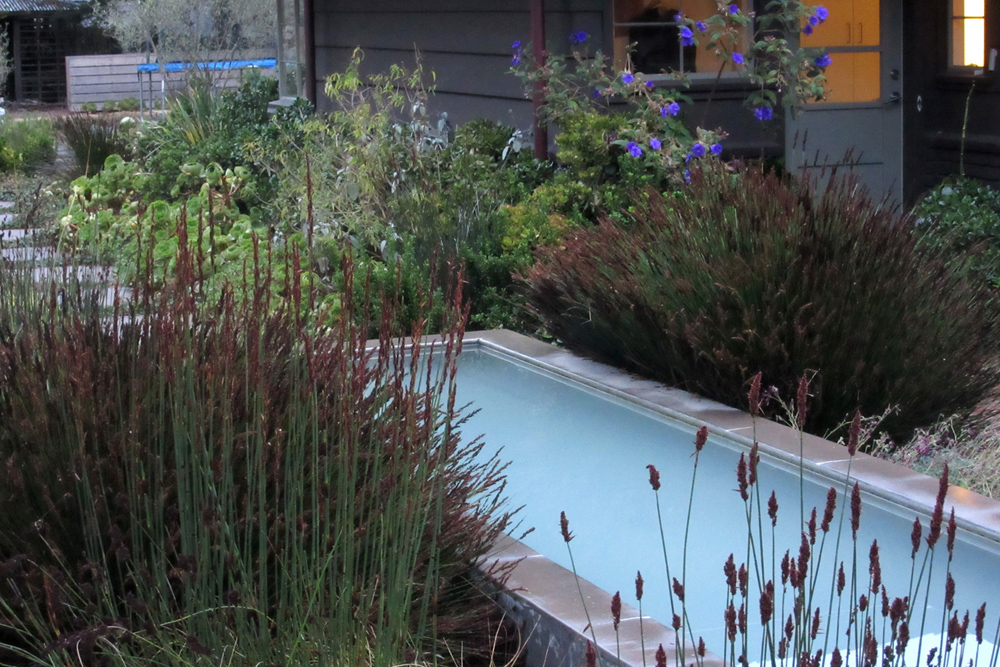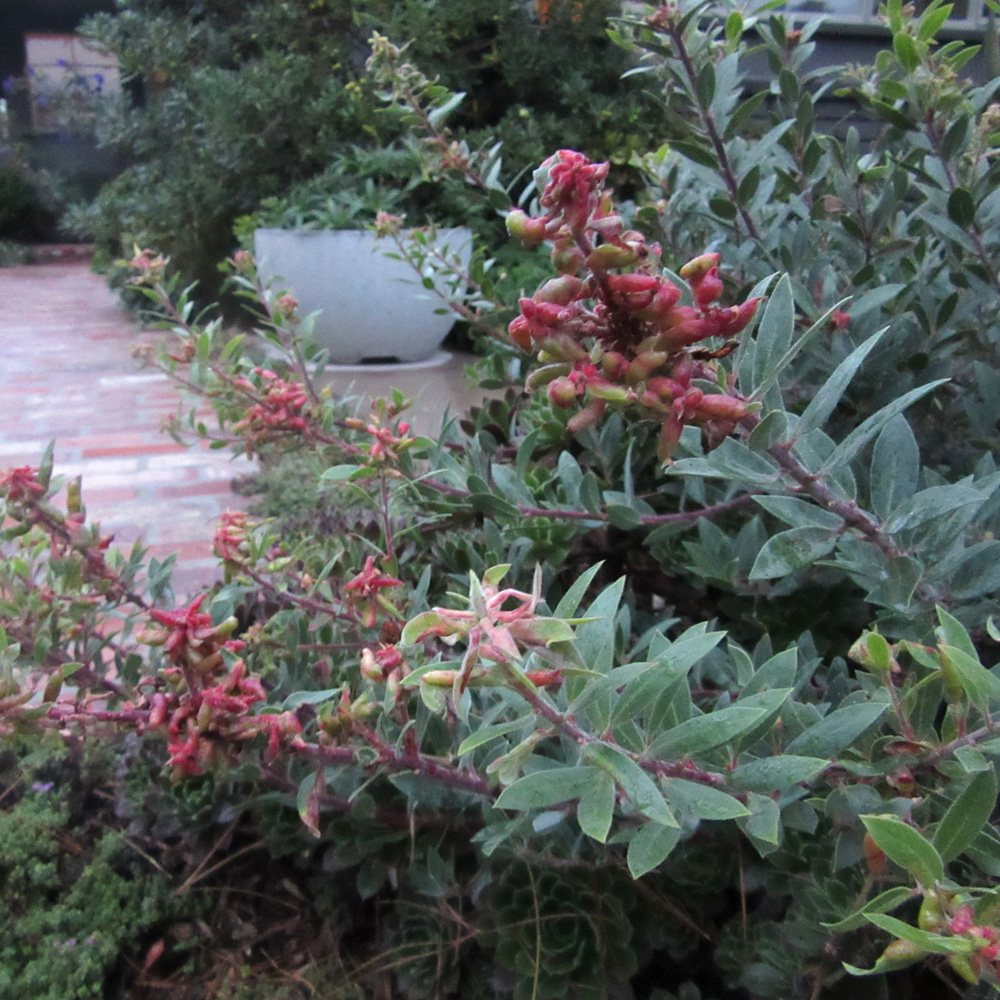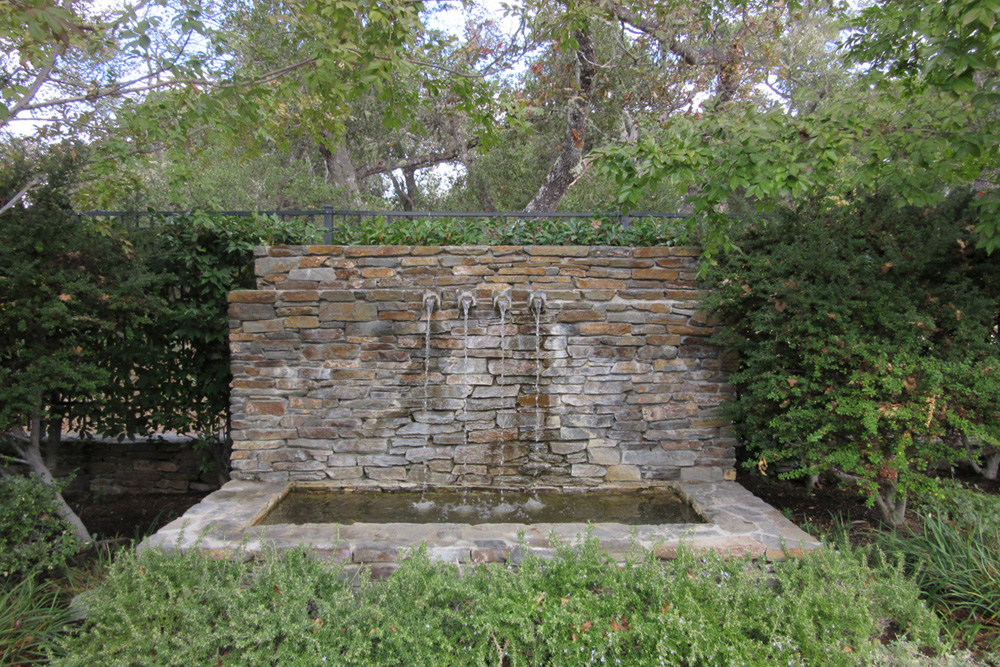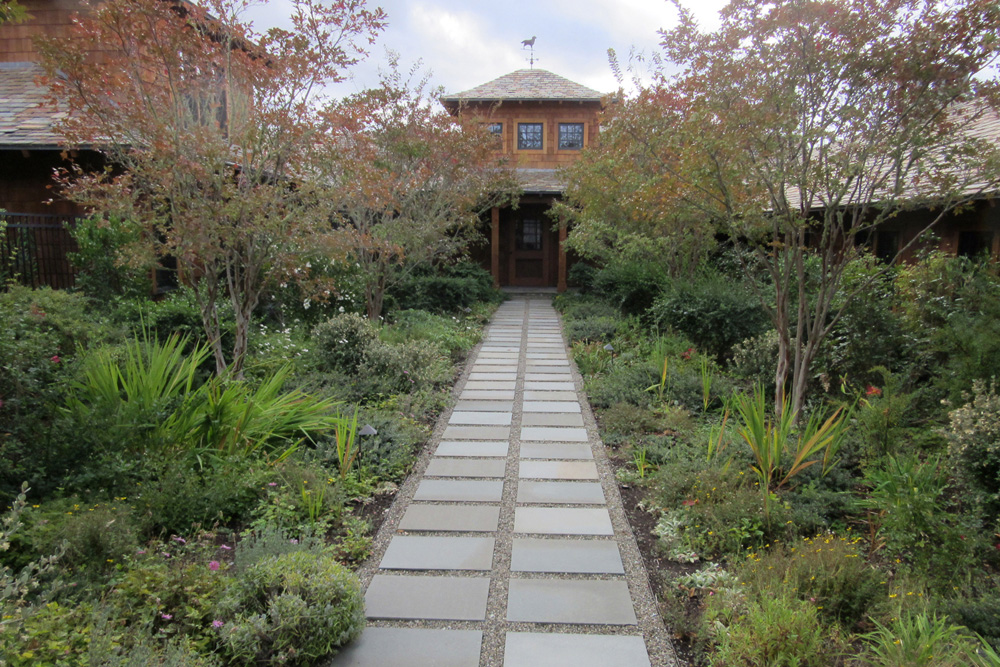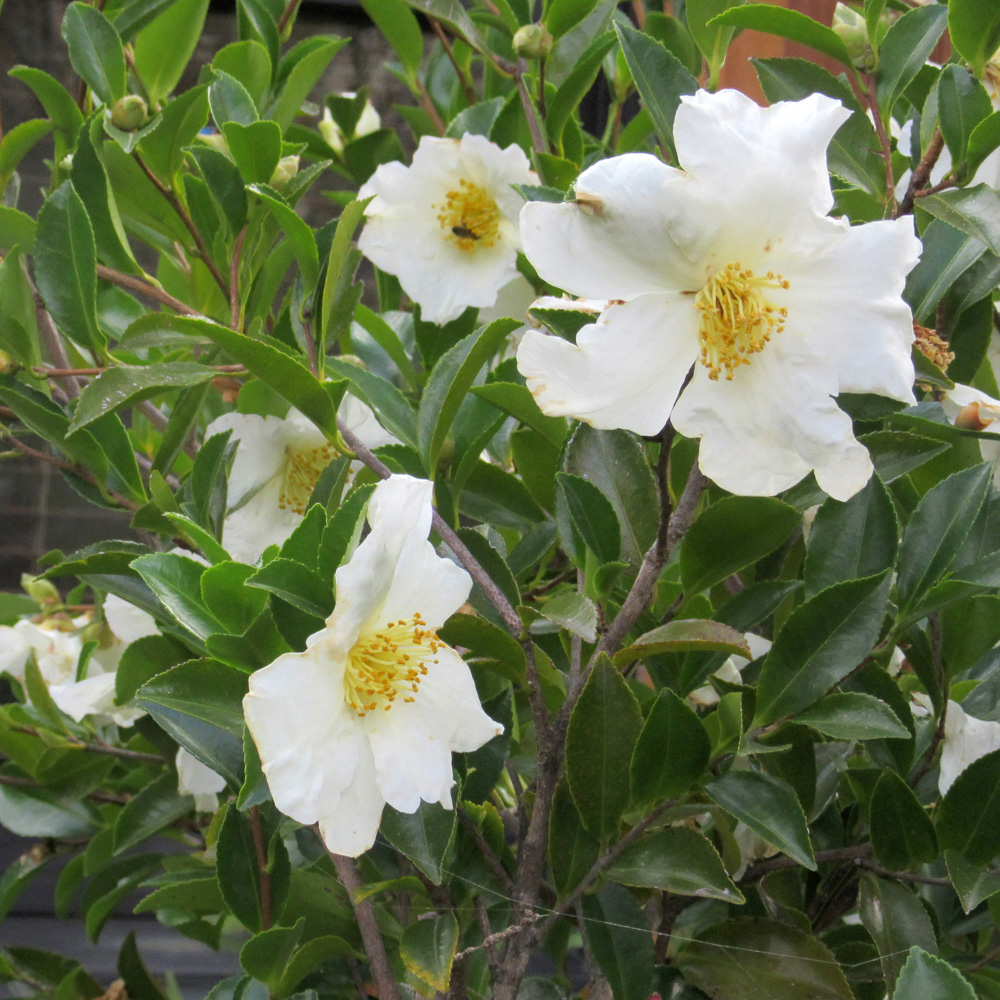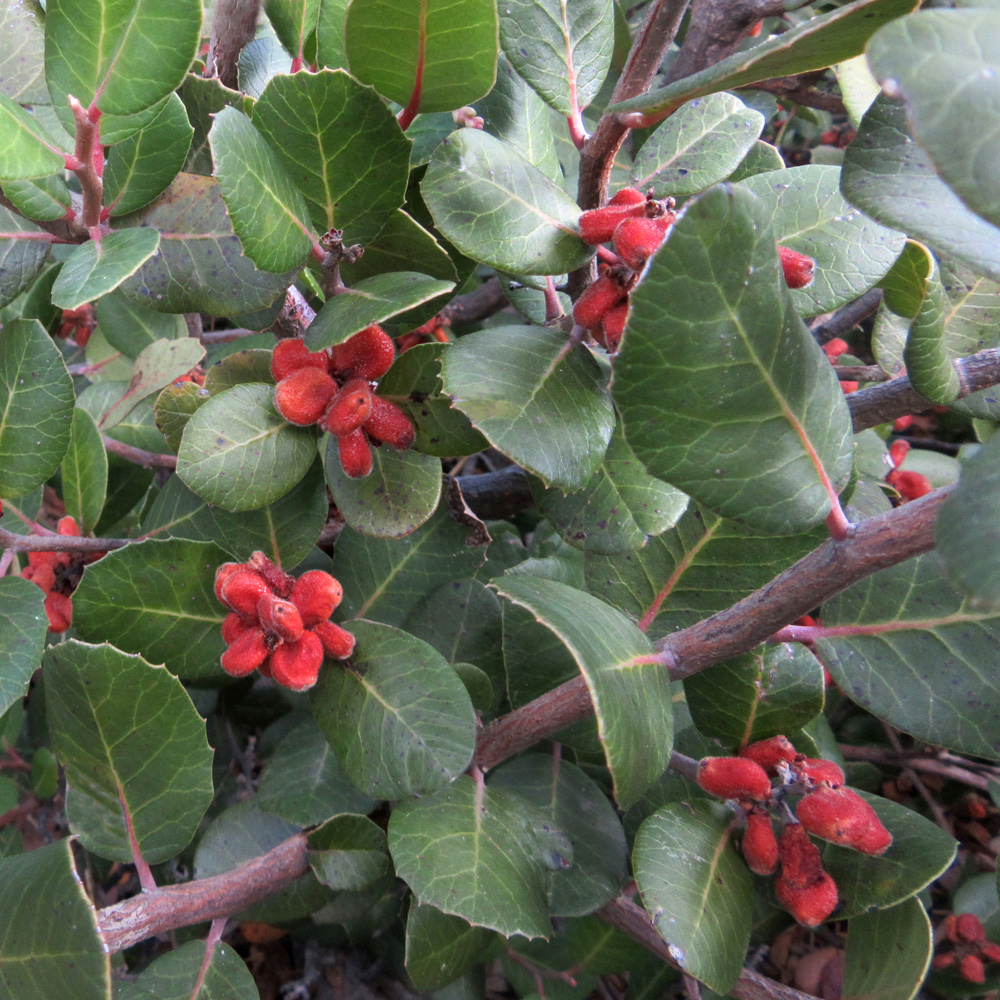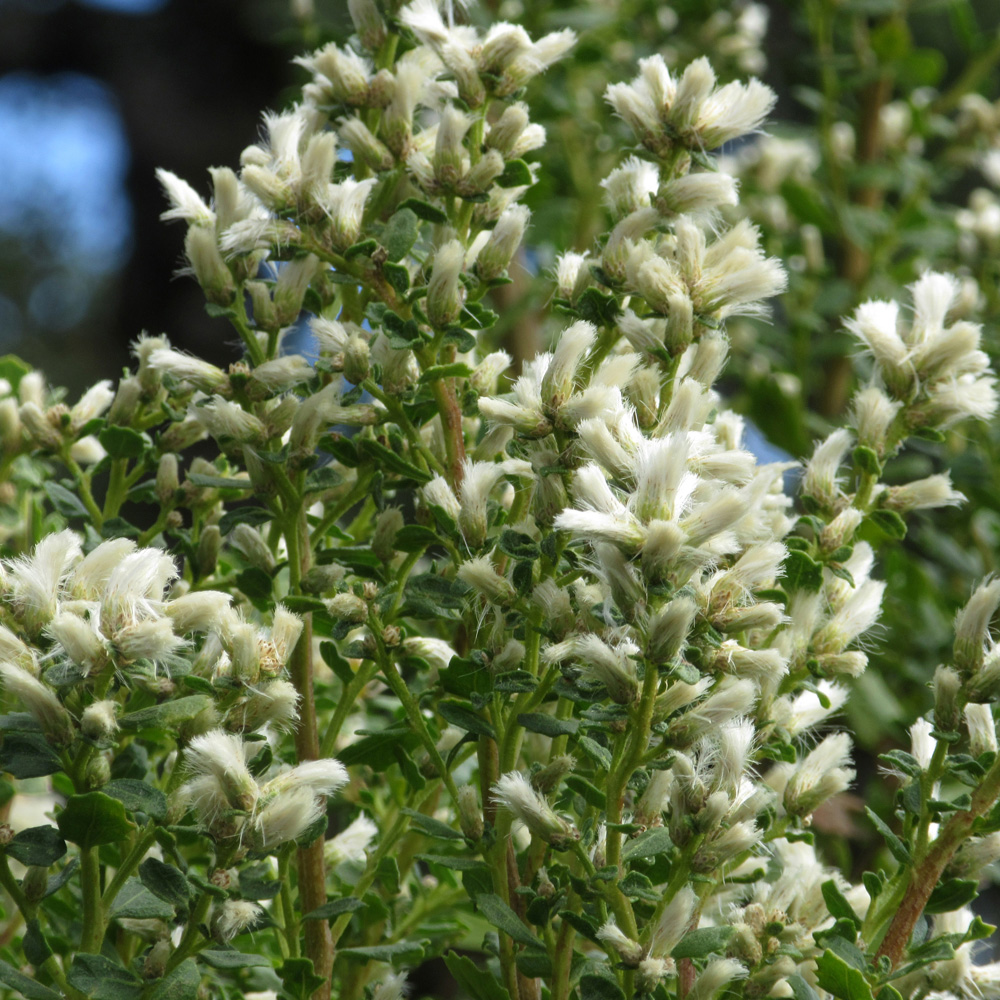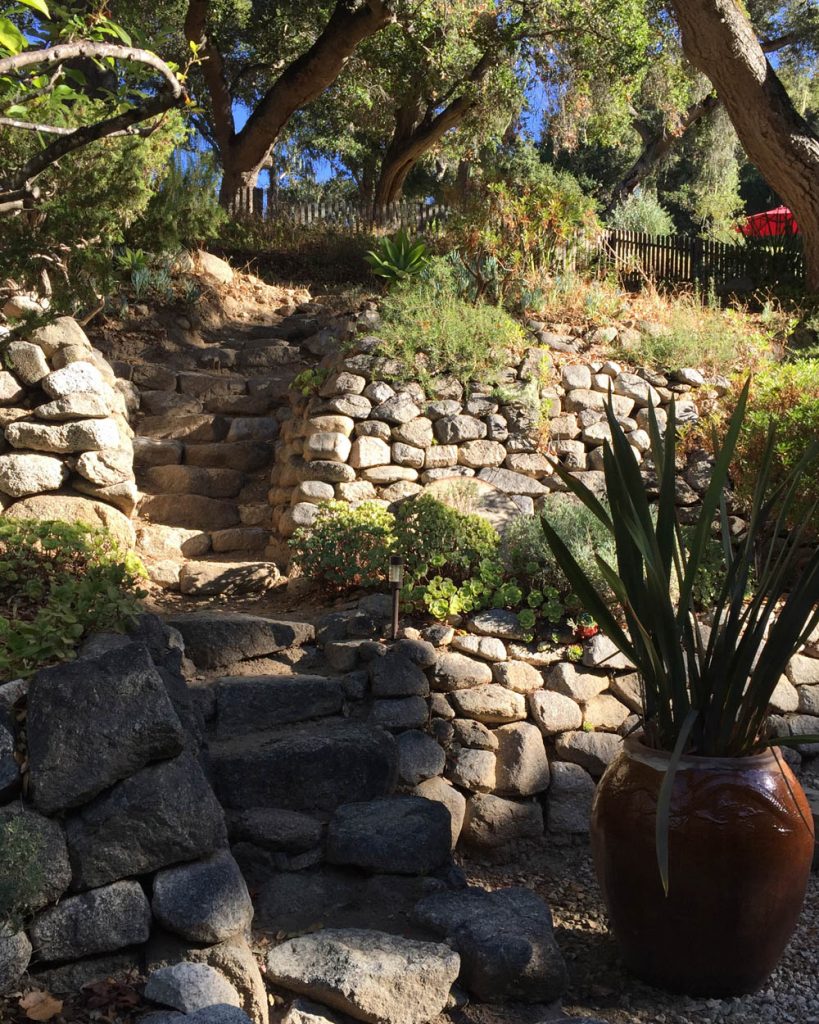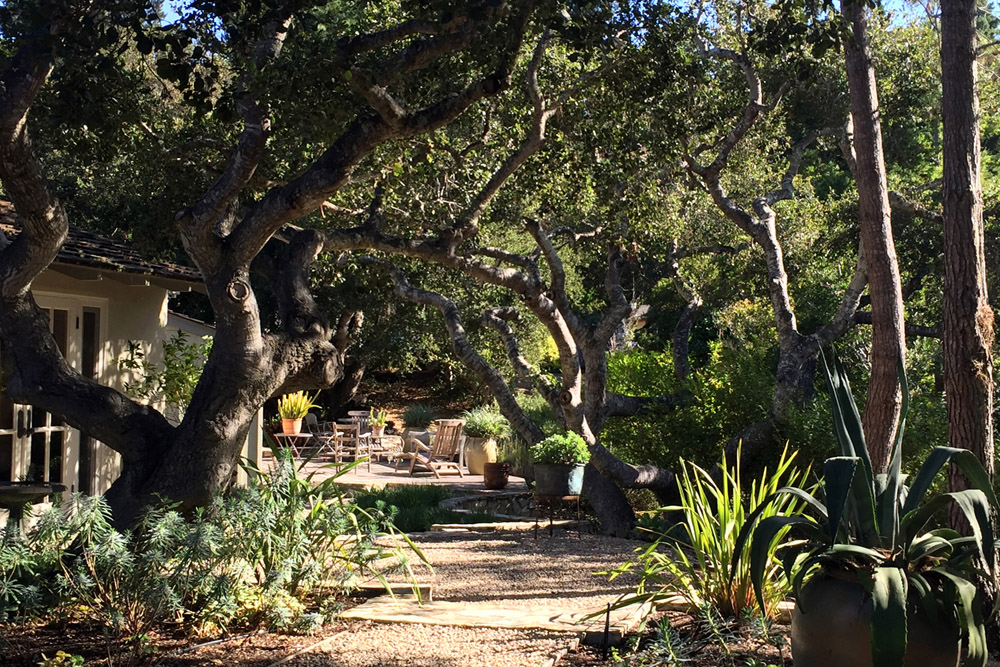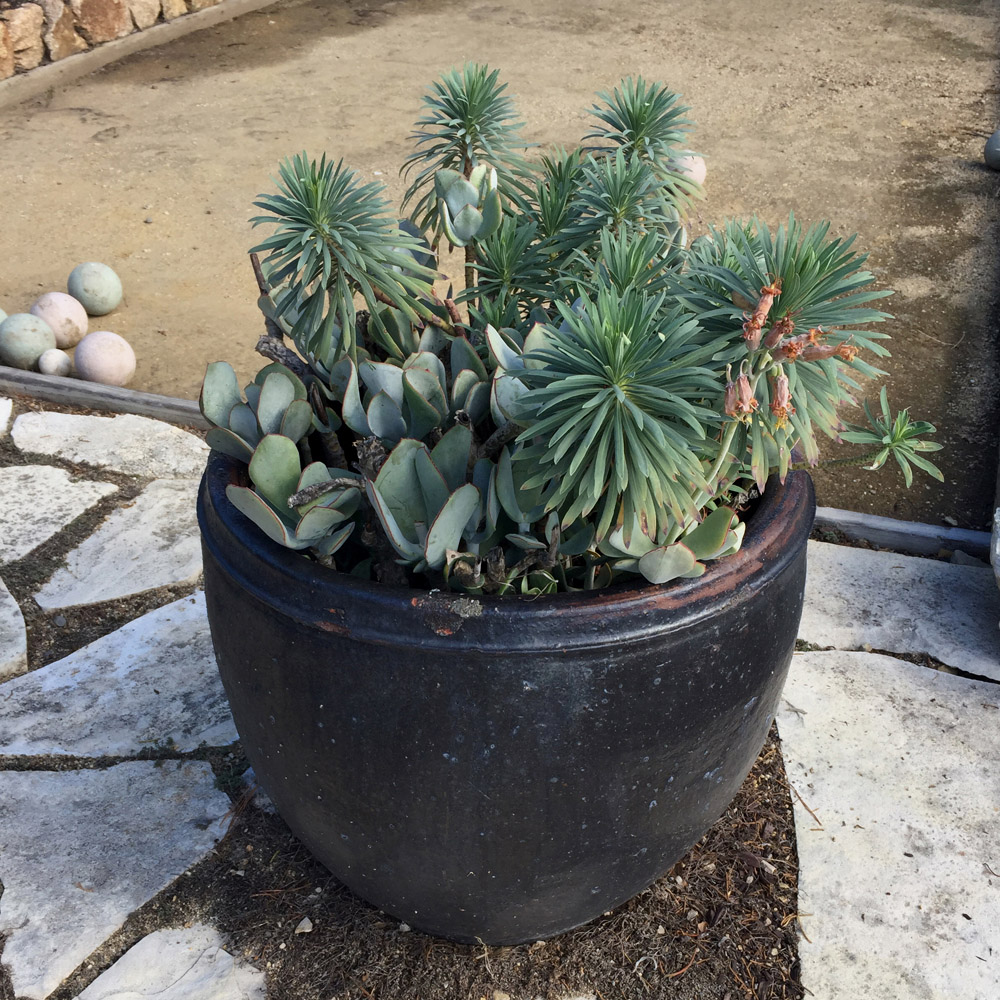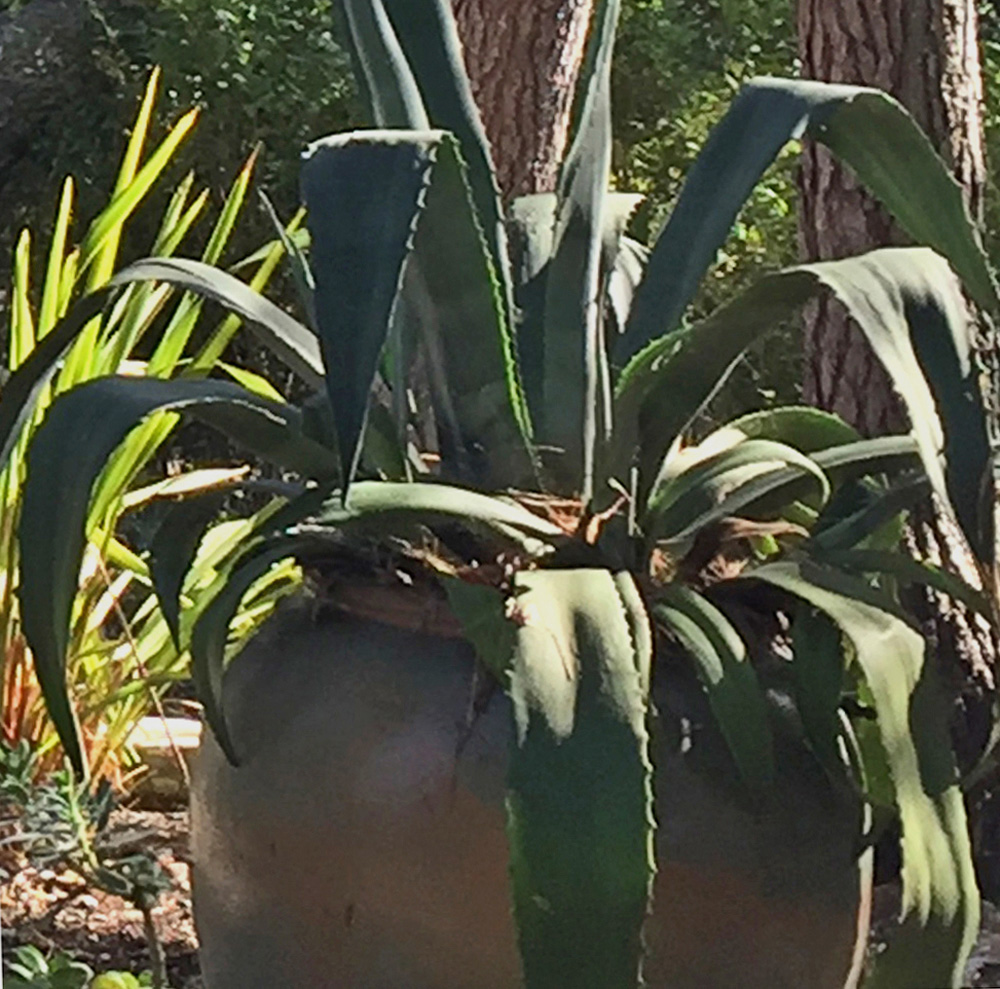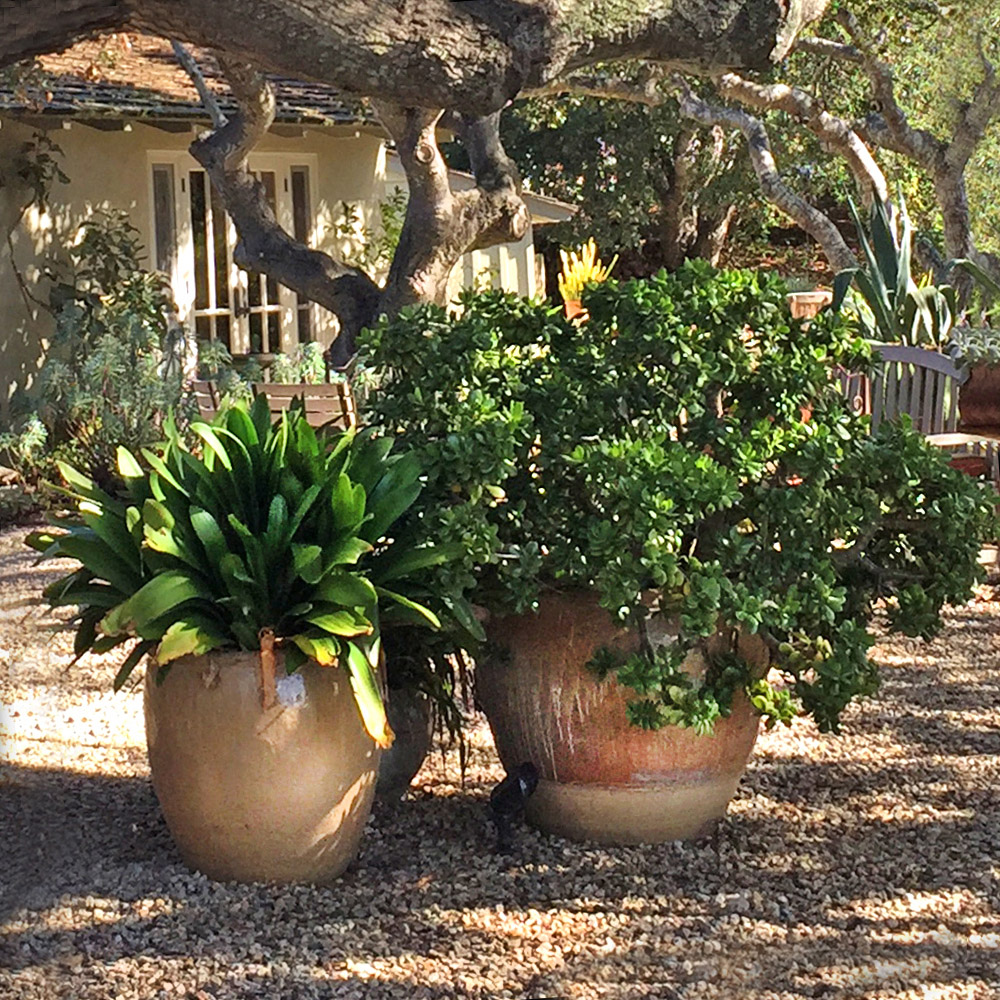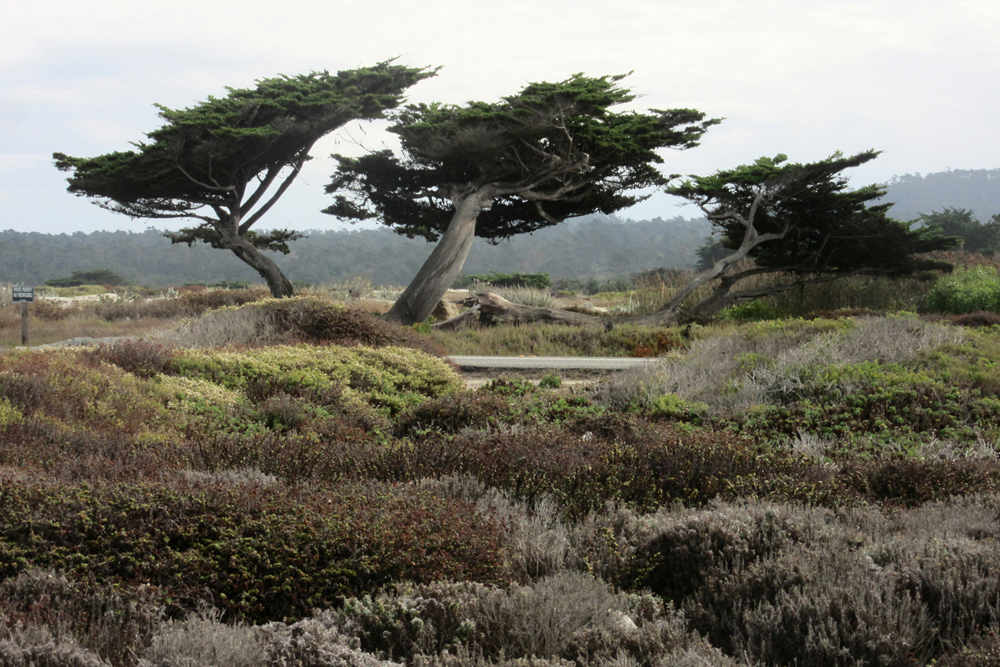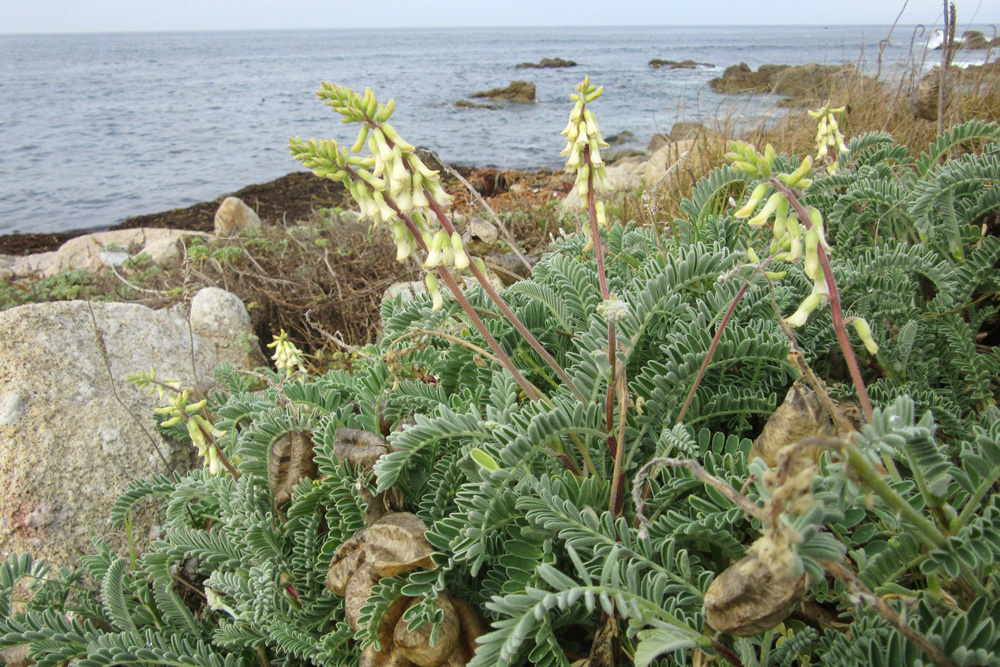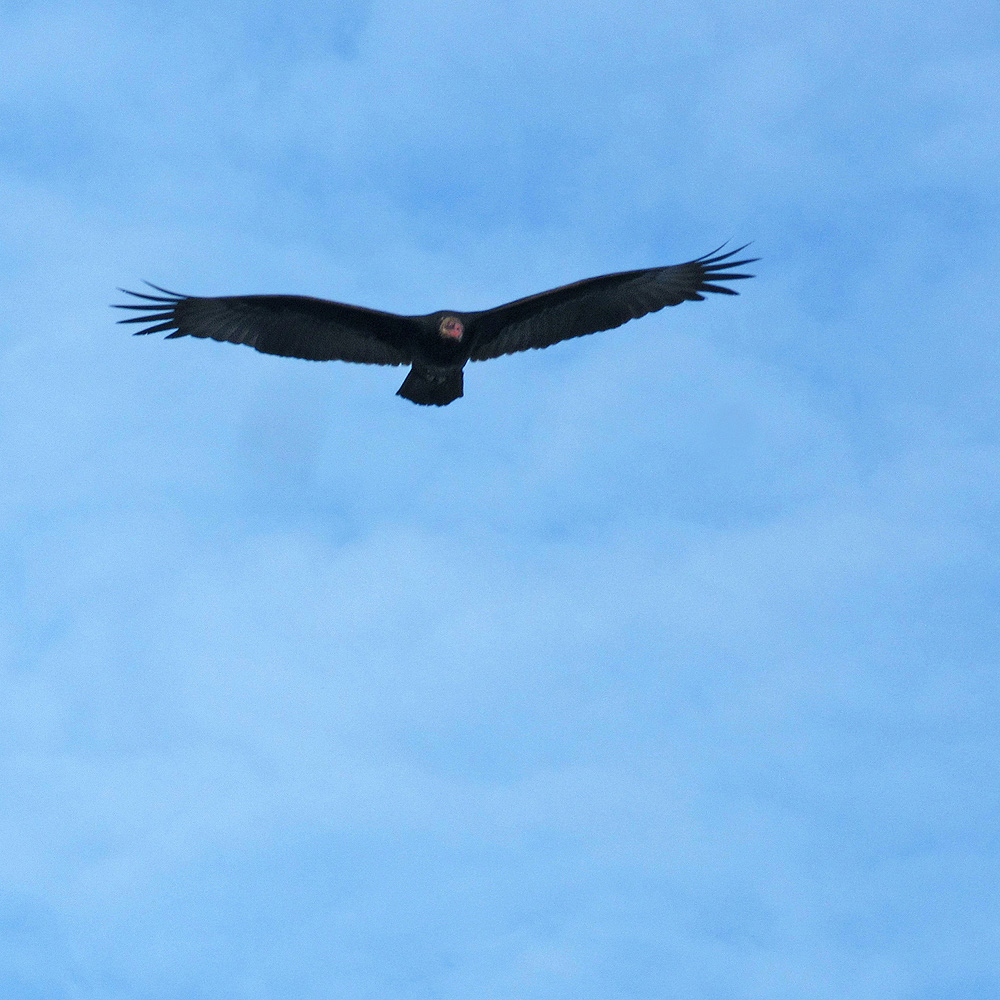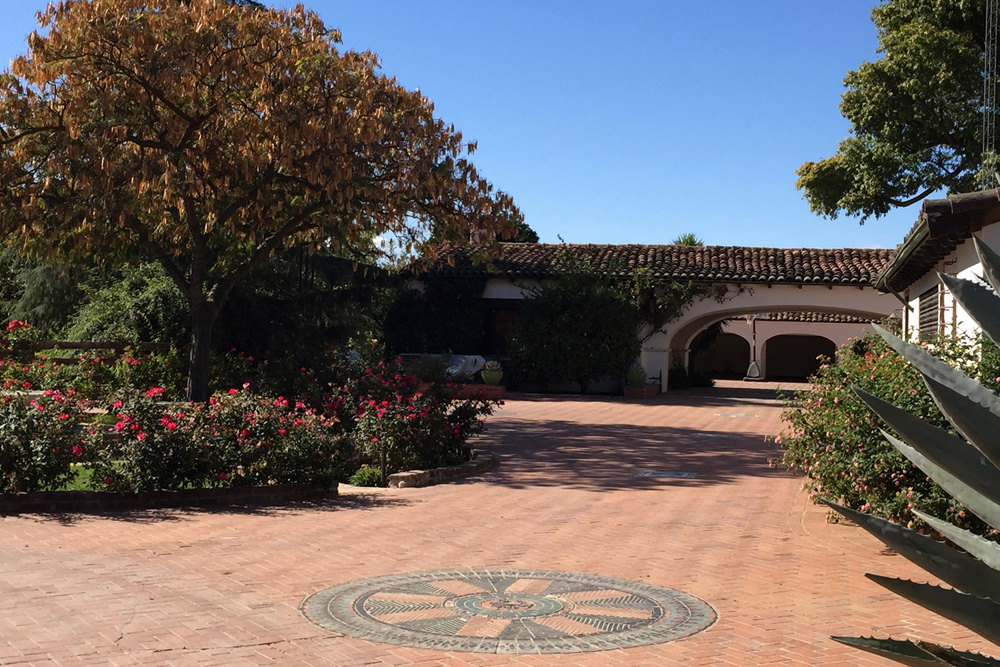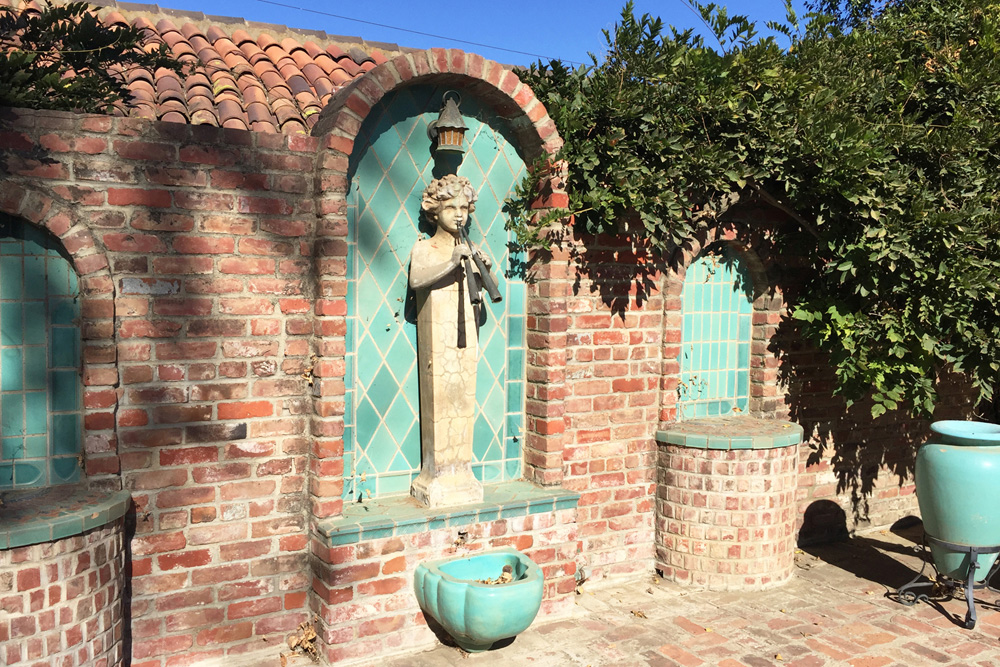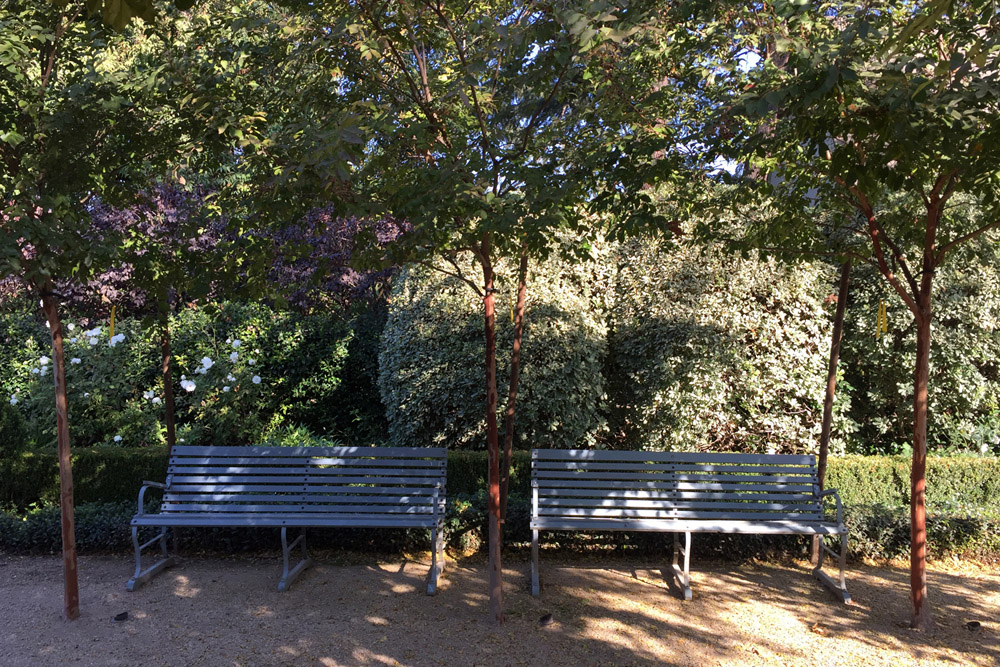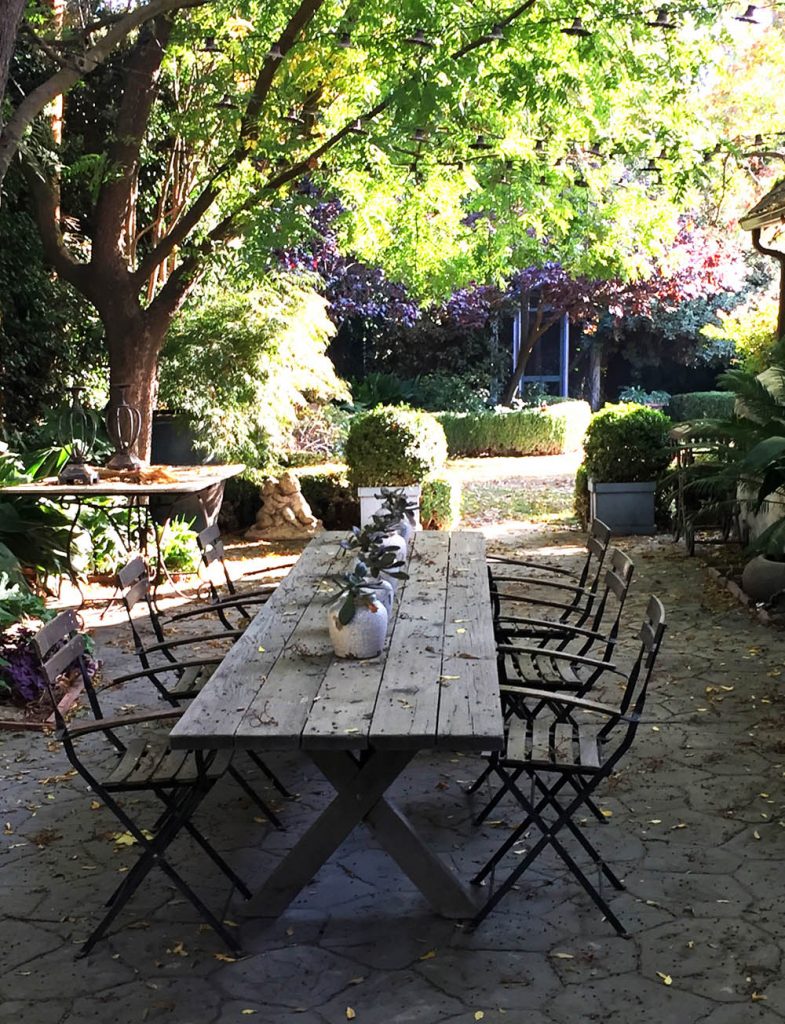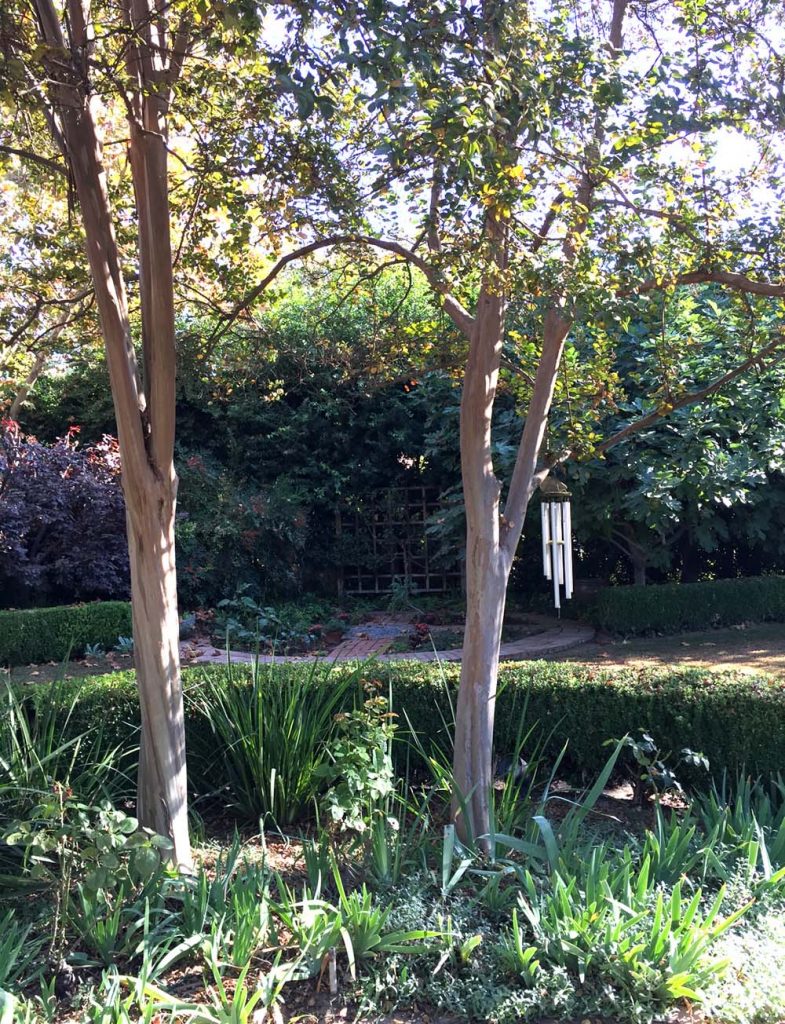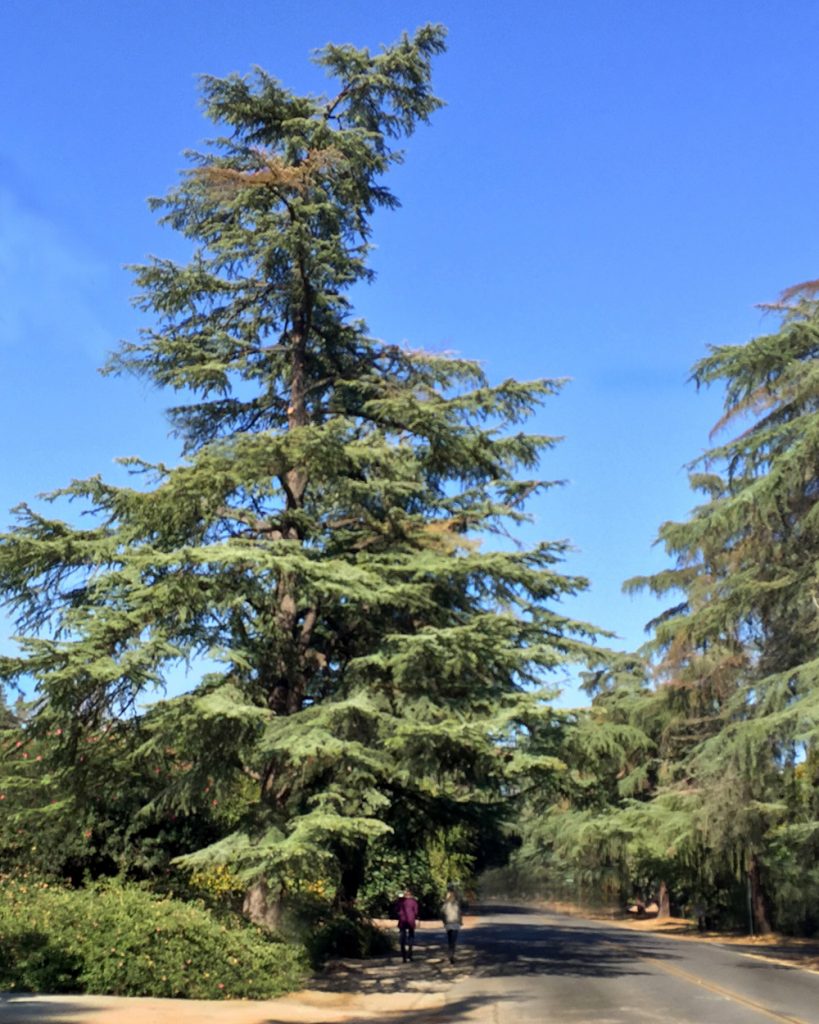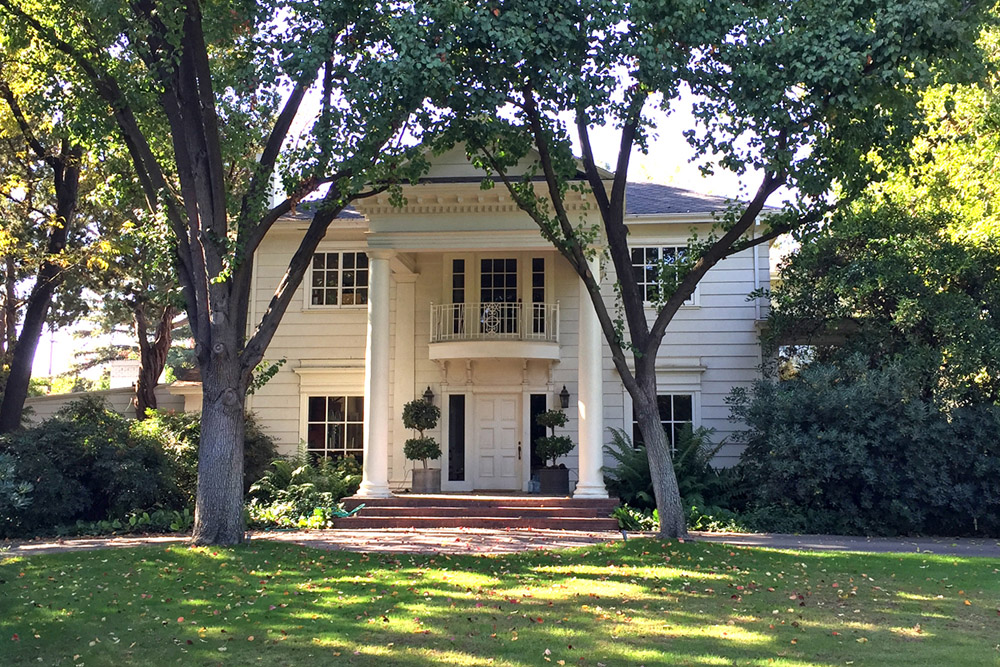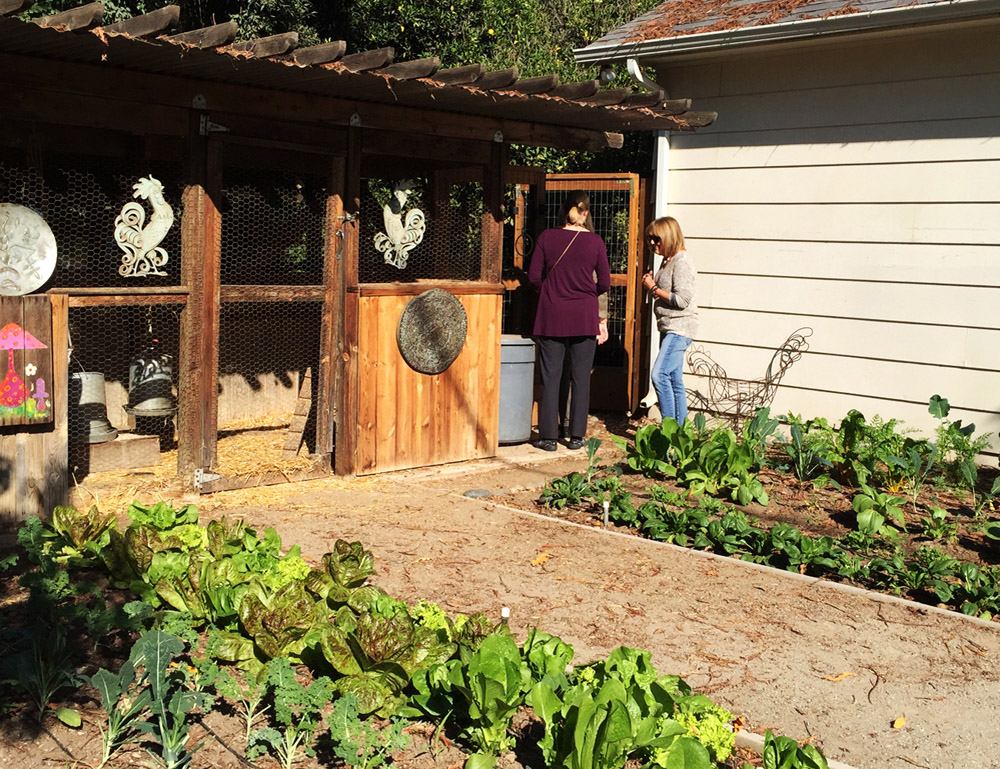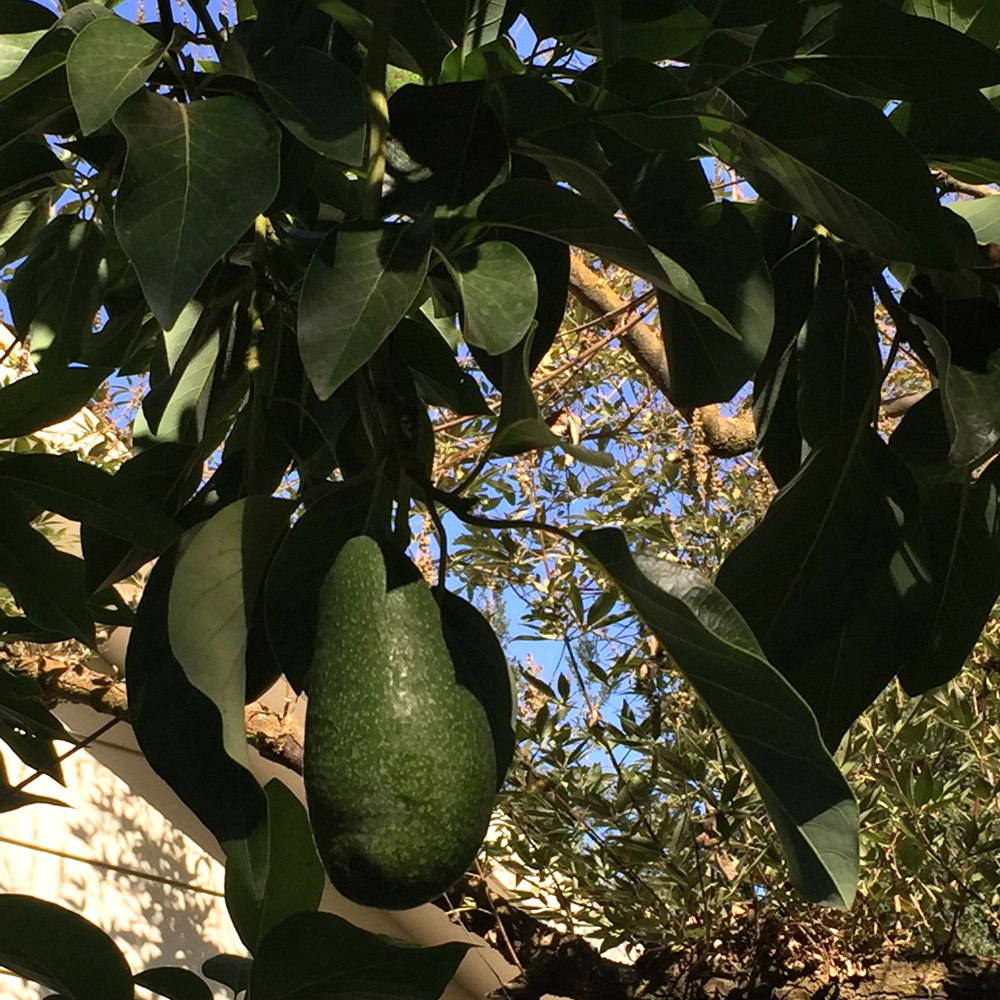Gardens of Northern California
October 2017
In late October 2017, two of our Californian members, Kirsten Honeyman and Jolene Telles, led a fascinating tour of gardens around San Francisco, Carmel and in the San Joaquin valley.
Click on the tabs below to read reports on each area we visited.
Click on the images to enlarge them / Cliquez sur les images pour les agrandir
Gardens of the wine country, San Francisco and the Bay Area
The Ruth Bancroft Garden
Ruth Bancroft planted her garden in Walnut Creek in the early seventies, on land formerly part of a 400 acre fruit farm producing walnuts and Bartlett pears. Ruth’s passion was water-conserving plants, so she started by planting succulents, then interspersed them with cacti to provide height. By trial and error, she learned how to protect her plants from winter rains and occasional hard frosts.
We were shown around the garden by Richard Turner, formerly the garden director there, and he explained that winter temperatures could be as low as -5°C. Succulents are therefore grown on mounds made of a mixture of rock and soil which provides excellent drainage and limits the risk of roots being frozen after rains.
Richard spoke of Ruth with great affection. Sadly, she died shortly after our visit, at the age of 109.
The mission statement of the garden is “to preserve this exceptional example of garden design and to continue to develop its collection of water-conserving plants for the education and enjoyment of the public”.
To this end the garden staff organise workshops, seminars and tours and the well-stocked nursery offers expert advice.
There is a review of the book about the Ruth Bancroft garden, ‘The Bold Dry Garden’ by Johanna Silver, on the MGi website.
Private gardens of the wine country and the East Bay
We visited four private gardens. Two, designed by landscape architect Andrea Cochran, were situated in the wine country north of San Francisco and two in the Bay area. As we travelled north of the city, the scars of the recent fires were plain to see, with great tracts of land blackened and burnt.
Andrea Cochran met us at Stone Edge Farm, near Sonoma, where she had created a contemporary garden around three new structures – a spa, an observatory clad in Corten steel which oxidises to create a beautiful rust-coloured patina and a low stone pyramid built from alluvial stones unearthed in the construction process.
Andrea wanted to create an oasis of calm, with the main focus being on the trees, including the existing mature Californian bay laurels (Umbellularia californica) and coast live oaks (Quercus agrifolia) plus introduced avenues of ancient olive trees.
Unifying everything is a meadow planted with drought-tolerant grasses including Pennisetum orientale (syn. P. fasciculatum) and the blue-stemmed Festuca mairei, native to the Atlas Mountains of Morocco. Also included is Muhlenbergia capillaris, chosen because its masses of airy pink flowers tone with the bright pink fruits of the Schinus molle trees.
Other elements included a dry stream bed edged with Furcraea foetida,a water feature made of the same alluvial stones as the pyramid and an extensive fruit and vegetable garden.
Our second Andrea Cochran garden, at a private home in Rutherford, was also contemporary in style.
It surrounded a beautiful modern house wrapped around by outdoor terraces with extensive views over Napa Valley vineyards.
The house sits on a paved platform edged with a hedge of the fruitless olive, Olea europea ‘Little Ollie’.
Along one side is a wide bed of the upright straw-coloured grass, Calamagrostis x acutiflora ‘Karl Foerster’.
Belvedere garden
At the tip of a peninsula jutting out into the bay in Marin County, north of San Francisco, is the aptly named small town of Belvedere. One of our hosts has his home here, on top of a steep slope, with stunning views of the San Francisco Bay and Angel Island.
The site has many mature evergreen trees which are regularly pruned to keep the canopies raised and the foliage neat, and the slopes are clothed in swathes of well-trimmed hedges, plus ferns, ivies and succulents.
Staircases and paths link the different parts of the garden, which must be kept densely planted in order to prevent soil erosion from the very steep slopes.
The garden is predominately in shades of green, with textural interest around the house from an ever-changing collection of succulents in pots.
Katherine Greenberg’s garden
Katherine Greenberg, garden designer and author, welcomed us to her home in Lafayette, to the east of San Francisco. Richard Turner describes this as “the finest garden of native plants in California”.
Katherine explained that she started developing the garden in the late seventies, a time of drought and water-rationing. The site was a bare hillside, leading down to a creek, so she started by planting trees, including 40 Quercus agrifolia.
On her website Katherine describes her garden thus:
“The front garden showcases grasses, sages, manzanitas, and California fuchsias for a chaparral effect. Many of these plants attract hummingbirds and other pollinators. The upper slope is planted with Pacific wax myrtles and oaks that blend with the natural oak woodland above the garden. A pergola shades the entrance to the house, and a gate by the front door opens to a patio that is used for outdoor living. A small meadow of grasses and perennials adds interest to this area.
At the west end of the property, the pool terrace is shaded by the spreading canopy of a coast live oak. From here a path, bordered by sedges, irises, and evergreen currants, leads to a gravel terrace and a grove of vine maples on the north side of the house. On the lower slope, drifts of grasses weave through manzanitas and sages. Farther down the slope, bays and willows grow along the creek, which attracts deer and other wildlife to the garden.” Read more…
Some interesting plants:
Botanical gardens in San Francisco and the Bay area
Time was running out by the time we got to the University of California Botanical Garden at Berkeley.
This was mainly due to our having spent far too long at lunch, but since this had been at the much celebrated Chez Panisse in Berkeley, it was difficult to tear ourselves away.
The 34 acre University of California Botanical Garden is one of the most diverse landscapes in the world, with more than 12,000 different types of plants arranged in groups according to their region of origin.
Although there are some groupings from desert, tropical and temperate climates, the emphasis is on collections from Mediterranean climates, including California, the Mediterranean basin, Australia, South Africa and Chile.
Here are some plants with strong architectural shapes and glaucus foliage:
Our second botanical garden visit was to the San Francisco Botanical Garden in Golden Gate Park, once more with Richard Turner as our guide.
As before, the botanical sections have been arranged by climate type but the emphasis here is to also provide an amenity for the local population, so there are meadows, lakes and woodland walks.
Richard explained that in 1870 the citizens of San Francisco decided they wanted a park, so set aside a 1000 acre piece of land near the Pacific Ocean. William Hammond Hall, a civil engineer, got the job of turning this area of sand dunes into a park. To stabilise the sand and to provide protection from the Pacific winds, he started by introducing trees, and by 1879, 155,000 trees had been planted. The principle species were Monterey pines (Pinus radiata) Monterey cypress (Cupressus macrocarpa) and Blue Gums from Australia (Eucalyptus globulus). The land began to be turned into a garden in the late 1930s and soon after, the Botanical Society was formed.
Because of the availability of moisture all year round from coastal fog, it is possible to grow a wide range of plants here, including those from mild-temperate zones such as New Zealand and Japan, and also to cultivate cloud forest plants. Again, we only had time to see a small part of what was on offer so followed a route suggested by Richard, past the Mediterranean basin section, through a woodland grove to the newly-renovated Gondwana circle. Gondwana was the southern half of an ancient super-continental land mass which stretched from South America, via Africa and Australia, to New Zealand.
In the Chilean section we were introduced to Drimys winteri, the sacred tree of the Mapuche people, its aromatic leaves used to ward off evil spirits. Under trees, we admired swathes of beautiful Crinum moorei, from South Africa, with flowers of pale pink and white.
New to us was Centradenia floribunda, a plant from southern Mexico which Richard told us is much-grown in San Francisco gardens.
In the cloud forest section was Deppea splendens, once native to Chiapas, Mexico, but now thought to be extinct in the wild. It was discovered in 1972 by Dr Dennis Breedlove who brought back seeds which were distributed and grown in various California botanical gardens. Most plants perished in the freeze of 1990, however one of the SF Botanical Garden plants survived and cuttings were distributed throughout California to enable continued propagation.
Richard also drew our attention to Ceroxylon quindiuense, a plant native to the Andean forests of Columbia and Peru. This palm can grow to a height of 45m or more and is the tallest recorded palm tree in the world.
Text and photos: Christine Daniels
Gardens and landscape of Carmel and the Pacific Coast
The first garden was right by the sea shore on Carmel Point. The view from the terrace was stunning.
The contemporary-style garden, very recently planted, had been designed byBernard Trainor with simplicity in mind and was intended mainly to provide a green ground cover and to be a foil to the house, and, of course, the view.
Since we were at Carmel Point, I asked Kirsten to drive us to another Bernard Trainor garden, one I had visited in 2008, and which had made a strong impression on me at the time.
The stunted Monterey cypresses were just as I remembered them, as was the driftwood fence. The plants had become a little overgrown, but still looked exactly right in the setting.
Next, Kirsten had arranged for us to visit Bernard Trainor’s own garden in Carmel-by-the-sea. Bernard grew up on the Mornington Peninsula, on Australia’s rugged south-eastern coast, not far from the city of Melbourne. Following an apprenticeship, he was awarded a scholarship to study in England, first under designer and plantswoman Beth Chatto, in Essex, then at the Chelsea Physic Garden. He arrived in California in 1995 and founded his design practice, based in Monterey. He specialises in the creation of gardens which sit well within their landscape, using local materials and native plants.
Like many landscape architects, Bernard’s own garden is experimental rather than ‘designed’. At home he tries out different materials for paths, steps and garden features, and experiments with plants for different uses. Pots are everywhere, mainly filled with succulents being tried out for clients. I loved the large paving slabs of poured concrete around which Thymus serpyllum ‘Elfin’ had been planted. Another successful combination was the South African Dymondia margaretae planted between large stone pavers.
The house is beautifully positioned, high up, with views to the sea, though during our visit it was difficult to see through the mist.
A long slim ‘bocce’ court (similar to pétanque) edged with wooden sleepers, delineated the edge of the steep downward slope. Behind the house was a similarly shaped lap pool, edged with restios.
Bernard pointed out some of the plants he uses most often in clients’ gardens:
- Rhamnus californica ‘Leatherleaf’
- Fatsia japonica ‘Spilt Milk’
- Myrsine africana (a good alternative to box, with nice red stems)
- Euonymus japonicus ‘Green Spire’ (a good hedge plant)
- Plecostachys serpyllifolia
- Arcostaphylos ‘Pacific Mist’, a manzanita
As it had started to rain, we took shelter indoors where we inundated Bernard with questions and enjoyed delicious refreshments. A truly memorable visit.
The following day we visited the Santa Lucia Preserve, in the hills above Carmel Valley. In the late 1800s this was cattle ranching land, then in 1924 it was bought by a wealthy businessman who constructed a lake, a polo field and a Spanish Colonial hacienda, where he held extravagant house parties
Today the land is protected by the Santa Lucia Conservancy and around 300 homes have been built on the 20,000 acre site.
We visited one of them, with a striking infinity pool overlooking the Santa Lucia hills.
The garden was designed by Stephen Suzman of Zeterre Landscape Architecture. Many native trees and shrubs had been used, including the Pacific madrone (Arbutus menziesii) and manzanita trees.
As we entered the gate we admired a lovely stone water feature, then turned into an entrance path lined with lagerstroemia trees.
I was surprised to see camellias in flower in November but was told that Camellia sasanqua is widely grown in California because it blooms in the autumn.
We collected fruits from the Californian native tree, Rhus integrifolia, also known as lemonade sumac and were introduced to the drought-tolerant Baccharis pilularis subsp. consanguinea, locally known as coyote brush.
Kirsten and Jolene offered us generous hospitality in their Carmel Valley homes for the duration of our stay, so breakfasts and lunches were often eaten in their gardens. Kirsten and her husband Bruce have a lovely wooden house set deep into the steep hillside and surrounded by trees.
They have built stone walls and flights of steps to create terraces reminiscent, to us, of a Provençal hillside, but have mainly used Californian native plants, which have to look after themselves, as this is a second home.
Jolene and John’s home is closer to the small town of Carmel Valley, but once again built on a plot surrounded by trees, which have been carefully pruned to provide shade
Jolene loves to plant up pots of all types and position them on the terraces which surround the house.
Some of Jolene’s pots:
Whilst in the Carmel area we took some interesting walks along paths close to the ocean.
Pebble Beach, just south of Monterey, is a lovely natural area of shingle, coastal vegetation, rocky outcrops, forest, seals, seabirds and, unfortunately (to my mind), several golf links.
The effect of the frequent strong winds was clear to see in the stunted shapes of the low-growing shrubs and the Monterey cypresses. Many plants were in flower, including Achillea millefolium, Astragalus nuttallii, Baccharis pilularis ssp. consanguinea, Bellis perennis, Erigeron glaucus, Grindelia latifolia subsp. platyphylla and the purple-pink Abronia umbellata, known locally as beach sand verbena.
I later learned that seeds of Abronia umbellata were first collected in 1786 by a French botanical expedition and shipped back to France where they were grown and studied by pioneer biologist Jean-Baptiste Lemarck. Beach sand verbena thus became the first native Californian flower known to science.
Rocky outcrops along the seashore were home to vast numbers of noisy sea birds, some of which wheeled above us, their wings outstretched in dramatic fashion.
Text and Photos: Christine Daniels
Gardens of Fresno and the San Joaquin valley
Our final destination was Fresno, situated to the east of Carmel in the San Joaquin valley. To get there, we crossed the coastal hills then drove through the vast flat-floored valley bounded by the Sierra Nevada mountains to the east. The valley has hot dry summers and normally rain in winter, though recently there have been several years with almost no rain at all. Here almost all of California’s agricultural produce is grown, principally grapes, citrus fruit, almonds, pistachios, walnuts, vegetables and cotton. The extraction of ground water for irrigation has caused parts of the valley floor to sink and water use is a much-discussed topic here.
We stopped for lunch at Quinta Fey, in Gustine. This fascinating property, originally intended as a ‘gentleman’s farm’, was built in the 1920s on a twelve-acre plot of land, entirely planted with English walnut trees (Juglans regia). Kirsten has written a wonderful article about the history of the property and the people who lived here, which was published in California’s leading garden magazine, Pacific Horticulture. The house and hard landscaping are influenced both by Spanish colonial architecture and Mexican haciendas. Large quantities of terracotta and brightly coloured ceramic Arts and Crafts tiles have been used for flooring and walls, indoors and out. Plants were mainly succulents: yucca, euphorbia, echeveria, sedum, aloe, aeonium, plus cacti, palm trees and some roses.
The Old Fig Garden neighbourhood of Fresno, where Kirsten and Bruce have their home, was a delightful surprise. In 1912, real estate developer, J.C. Forkner, from Kansas, set about establishing the world’s largest fig ranch, on a 12,000 acre plot which he called ‘Fig Gardens’. He envisaged an estate where individual homes would be built, each one in a small, but potentially profitable, fig orchard. The project started well, but foundered in the Great Depression, however its legacy is an area of quiet shady streets dotted with occasional fig trees.
Kirsten loves to travel, especially to France, and the influences are clear in her garden. The entrance courtyard is dressed with clipped box hedges and terracotta pots. A path then leads from the gate, through a rose garden to the house and the front door. To the left is the shady pétanque court, lined with benches, then, circling round, a garden room with clipped box parterres and a lovely water feature. Continuing behind the house is the dining area, which Kirsten has named ‘the French Quarter patio’, then finally full circle, to the east garden which has a lawn and a potager.
Kirsten has described the creation of two parts of her garden on her website, La Dolce Vita: here and here.
Many years ago, the streets of the Old Fig Garden had been planted with Himalayan cedars (Cedrus deodara) and now majestic specimens give the area a distinctive character.
We were walking from Kirsten’s house to Jolene’s house – for lunch (Jolene loves to cook even more than she loves to garden).
Jolene’s house was built in ‘antebellum’ style, the name given to an architectural style characteristic of the 19th century southern United States. At the back of the house a long verandah provides shade, then a grassy area leads on the potager, the orchard (Mission figs, Santa Rosa plums, peaches, nectarines, cherries and citrus) and the chicken shed.
Jolene proudly showed us her avocado tree, a special Mexican cultivar called Persea americana ‘Zutano’, which had eventually fruited after seven years.
Huge thanks from all of us to Kirsten, Jolene and Paul for their warm welcome and wonderful hospitality and to everyone who opened their gardens and shared their stories of Mediterranean climate gardening, California style.
Text and photos: Christine Daniels
![]()

